prisoner's dilemma
description: canonical example of a game analyzed in game theory
54 results
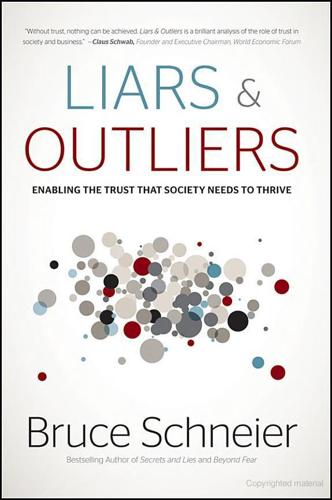
Liars and Outliers: How Security Holds Society Together
by
Bruce Schneier
Published 14 Feb 2012
Rival political parties do it, too. If you assume the individuals can switch between strategies and you set the parameters right, the Hawk-Dove game is a Prisoner's Dilemma. When pairs of individuals interact, they each have the choice of cooperating (being a dove) or defecting (being a hawk). Both individuals know that cooperating is the best strategy for them as a pair, but that individually they're each better off being a hawk. Not every interaction between two people involves a Prisoner's Dilemma. Imagine two drivers who are both stuck because a tree is blocking the road. The tree is too heavy for one person to move on his own, but it can be moved if they work together.
…
The tree is too heavy for one person to move on his own, but it can be moved if they work together. Here, there's no conflict. It is in both their selfish interest and their group interest to move the tree together. But Prisoner's Dilemmas are common, and once you're primed to notice them, you'll start seeing them everywhere.4 The basic Prisoner's Dilemma formula involves two people who must decide between their own self-interest and the interest of their two-person group. This is interesting—and has been studied extensively5—but it's too simplistic for our purposes. We are more concerned with scenarios involving larger groups, with dozens, hundreds, thousands, even millions of people in a single dilemma.
…
Recall the two drivers stuck behind a fallen tree that neither one can move by himself. They're not in a Prisoner's Dilemma. They're not even in a Snowdrift Dilemma. In their situation, their selfish interest coincides with the group interest—they're going to move the tree and get on with their lives. The trick to solving societal dilemmas is make them look like that. That's what societal pressures do: they're how society puts its thumb on the scales. Solving societal dilemmas often means considering the people involved and their situations more broadly. The sealed-bag exchange is no longer a Prisoner's Dilemma if we assume the people involved have a sufficiently strong conscience.

Governing the Commons: The Evolution of Institutions for Collective Action
by
Elinor Ostrom
Published 29 Nov 1990
G., 223-4nl Gadgil, M., 23 Gal Oya irrigation scheme, Sri Lanka, 158, 167-73, 179-81, 189, 240n19, 241n25,n26 see also Sri Lanka irrigation systems Gal Oya left bank, see Gal Oya irrigation scheme Galanter, M., 219n16n19 games, 23, 217-18n2 "assignment", 47 assurance, 42, 47 Central Authoriry, 10-12f chicken, 47 commons dilemma, see commons, tragedy of detection/deterrence, 49 Hardin Herder, 4, 9-10, 39; see also prisoner's dilemma against nature, 12-13 noncooperative, 4 prisoner's dilemma, see prisoner's dilemma Self-Financed Contract-Enforcement, 15f, 17-18, 219n14,n17,n18 Gardner, R., 47, 55, 140, 220n20, 222-3n25,231n8,237n52, 244n20 Generalisimo Dam, 71, 73 Gilles, J. L., 63, 208 Glick, T. F., 71, 74-7, 225nl0, n13, 225 6nI4,226nI6,226-7n19,227n20 Godwin, R.
…
In terms of years in a penitentiary, the strategic problem might be reduced" to the following: Prisoner 2 Prisoner 1 Not confess Confess Not confes... 1 year each Confess 3 months for prisoner 1 10 years for prisoner 2 10 years for prisoner 1 3 months for prisoner 2 8 years each R. Kenneth Godwin and W. Bruce Shepard (1979), Richard Kimber (1981), Michael Taylor (1987), and others have shown that commons dilemmas are not always prisoner's dilemma (PD) games. Dawes (1973, 1975) was one of the first scholars to show the similarity of structure. 2 Hardin's model easily translates into the prisoner's dilemma structure. Many problems related to the use of common-pool resources (CPRs) do not easily 217 Notes to pp. 7-11 3 4 5 6 7 8 9 10 translate. Simple games such as "chicken" and "assurance" games are better representations of some situations (M.
…
On Models of Commercial Fishing. Journal of Political Econ omy 77:181-98. Snidal, D. 1979. Public Goods, Property Rights, and Political Organizations. In ternational Studies Quarterly 23:532-66. Snidal, D. 1985. Coordination Versus Prisoner's Dilemma: Implications for In ternational Cooperation and Regimes. American Political Science Review 79:923-47. Sobel, J. H. 1985. Utility Maximizers in Iterated Prisoner's Dilemmas. In Para doxes of Rationality and Cooperation, eds. R. Campbell and L. Sowden, pp. 306-19. Vancouver: University of British Columbia Press. Speck, F. G., and W. S. Hadlock. 1946. A Report on Tribunal Boundaries and Hunting Areas of the Malecite Indians of New Brunswick.
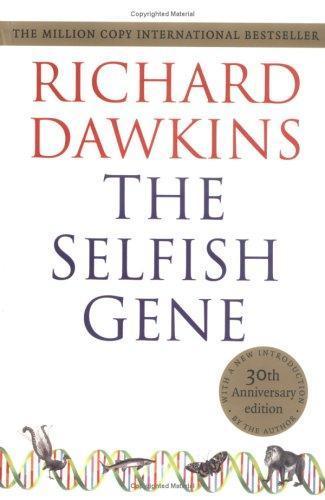
The Selfish Gene
by
Richard Dawkins
Published 1 Jan 1976
Axelrod, like many political scientists, economists, mathematicians and psychologists, was fascinated by a simple gambling game called Prisoner's Dilemma. It is so simple that I have known clever men misunderstand it completely, thinking that there must be more to it! But its simplicity is deceptive. Whole shelves in libraries are devoted to the ramifications of this beguiling game. Many influential people think it holds the key to strategic defence planning, and that we should study it to prevent a third world war. As a biologist, I agree with Axelrod and Hamilton that many wild animals and plants are engaged in ceaseless games of Prisoner's Dilemma, played out in evolutionary time. In its original, human, version, here is how the game is played.
…
It doesn't even matter how many of them are positive (payments) and how many of them, if any, are negative (fines). What matters, for the game to qualify as a true Prisoner's Dilemma, is their rank order. The Temptation to defect must be better than the Reward for mutual cooperation, which must be better than the Punishment for mutual defection, which must be better than the Sucker's payoff. (Strictly speaking, there is one further condition for the game to qualify as a true Prisoner's Dilemma: the average of the Temptation and the Sucker payoffs must not exceed the Reward. The reason for this additional condition will emerge later.)
…
If only . .. if only . .. if only there could be some way of reaching agreement, some way of reassuring each player that the other can be trusted not to go for the selfish jackpot, some way of policing the agreement. In the simple game of Prisoner's Dilemma, there is no way of ensuring trust. Unless at least one of the players is a really saintly sucker, too good for this world, the game is doomed to end in mutual defection with its paradoxically poor result for both players. But there is another version of the game. It is called the 'Iterated' or 'Repeated' Prisoner's Dilemma. The iterated game is more complicated, and in its complication lies hope. The iterated game is simply the ordinary game repeated an indefinite number of times with the same players.
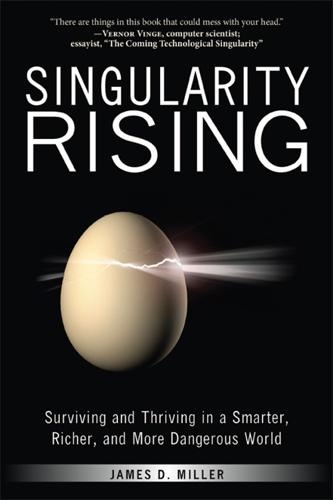
Singularity Rising: Surviving and Thriving in a Smarter, Richer, and More Dangerous World
by
James D. Miller
Published 14 Jun 2012
Knowing the stakes, rival nations might go full throttle to win an ultra-AI race, even if they understood that haste could cause them to create a world-destroying ultra-intelligence. These rivals might realize the danger and desperately wish to come to an agreement to reduce the peril, but they might find that the logic of the widely used game theory paradox of the Prisoners’ Dilemma thwarts all cooperation efforts. Before we apply the Prisoners’ Dilemma to AI development, let’s see how police might use it. Pretend that you and your co-conspirator, Hal, have just been arrested for two crimes: murder and illegal weapons possession. The police found illegal weapons on both of you and could definitely succeed in sending the two of you to prison for a year.
…
Consequently, you confess because you realize that regardless of what Hal does you’re better off confessing. Since, however, Hal will also find it in his self-interest to confess, you will each probably spend twenty years in prison. The Prisoners’ Dilemma result seems crazy because it superficially appears that neither criminal would confess: after all, they are better off if neither confesses than if they both do. But neither party has the ability to ensure that both parties will remain silent. Consider the four possible outcomes of the Prisoners’ Dilemma game: WHO CONFESSES? YOUR PRISON SENTENCE 1. Just You 0 years 2. Neither 1 year 3. Both 20 years 4. Just Hal Life If Hal confesses, your actions determine whether your outcome will be (3) or (4), so you should confess to get (3) and avoid your worst possible outcome of (4).
…
The United States might also think that if the Chinese proceed quickly, then they should go quickly, too, rather than let the Chinese be the likely winners of the ultra-AI race. We can’t know a priori whether the United States and China would be in a Prisoners’ Dilemma, as this would depend on how the two nations weighed the risks of destroying the world and of having their rival create an ultra-AI. But here’s one example in which it’s at least plausible that the United States and China would fall into the Prisoners’ Dilemma: WHO GOES SLOWLY PROBABILITY THAT THE UNITED STATES WINS THE SEED AI RACE PROBABILITY THAT THE WINNER’S ULTRA-AI WILL BE FRIENDLY Both 50% 100% Just China 100% 90% Just the United States 0% 90% Neither 50% 80% Let’s imagine a conversation in which a future US president, faced with the above table, explains to the military why he is ordering them to develop an ultra-AI quickly: Generals, if we had a choice between the United States and China both going slowly or both of us going quickly, I would certainly prefer the first because we would have the same chance of being the first to build an ultra-AI in either case, and it would come with no risk of destroying the world.

Culture and Prosperity: The Truth About Markets - Why Some Nations Are Rich but Most Remain Poor
by
John Kay
Published 24 May 2004
The Akerlof model is not about the car market, just as the Prisoner's Dilemma is not about the U.S. penal system. The illustrations are metaphors, vivid ways of describing the properties of mathematical models-the story of the Prisoner's Dilemma was reportedly invented by Tucker when he was asked to give an account of his work to a nonspecialist audience. The power of these models is not that they mirror nature, but that they illuminate it. The implications of both the lemons model and the Prisoner's Dilemma are unexpected, and forceful. Both have generated a large literature-in the case of the Prisoner's Dilemma, it runs to thousands of articles and several books-that develop applications and extensions of the basic idea.
…
The same analysis applies to her, and she confesses. Both go to gaol for seven years. People often miss the force of the Prisoner's Dilemma when it is first explained to them. They think that self-regarding people will want to cooperate when they see the benefits of cooperation: the Prisoner's Dilemma arises only because the prisoners do not understand the consequences of their actions. But the paradox is much deeper. The self-interested benefits of cooperation are not enough to persuade self-interested people to achieve them. Even after the Prisoner's Dilemma has been explained, and both parties understand that they will go to gaol for seven years as a result, the self-regarding action is to confess.
…
Albert Tucker, who invented the story of the Prisoner's Dilemma, probably used that example precisely because criminals cannot invoke the courts to enforce nefarious agreements. But criminals often have their own enforcers. We talk of "honor among thieves": those outside the law create their own social institutions to handle the Prisoner's Dilemma. But there is also honor among the honest. The social and economic lives of hunters were linked. Shirking in the forest implied penalties around the campfire. Yet community enforcement has its own Prisoner's Dilemma. It is in the best interests of the group for everyone to penalize shirkers, but not necessarily in my individual interest.

Model Thinker: What You Need to Know to Make Data Work for You
by
Scott E. Page
Published 27 Nov 2018
Figure 22.1: An Example of a Prisoners’ Dilemma Game The Prisoners’ Dilemma captures the core incentives of many real-world contexts. It can model the arms race between the United States and the former Soviet Union, where defecting corresponds to spending money on weapons and cooperating to economic development. It can model political campaigning and whether to go negative (defect) or to run positive campaign ads (cooperate). It can even explain why male peacocks have such long tails: each peacock has an incentive to appear stronger and more robust than the others. Some instances of the Prisoners’ Dilemma can only be recognized after the fact.
…
Allowing them to adapt more quickly can hinder it. To explore these questions and to unpack the interplay between behavioral assumptions and cooperation, we rely on the familiar Prisoners’ Dilemma game as well as a cooperative action model. The second model allows us to capture actions that benefit multiple players as well as to model cooperation on networks. The remainder of the chapter takes the following form. We begin with a description of the Prisoners’ Dilemma and show how cooperation can be maintained among rational actors. We then show how repetition also can induce cooperation between rule-based actors and why evolving cooperation is more difficult than maintaining it.
…
We then show how repetition also can induce cooperation between rule-based actors and why evolving cooperation is more difficult than maintaining it. We then consider less sophisticated biological actors and show how kin selection and local clustering can promote cooperation. The last two sections cover group selection and the question of how we use these models to produce more cooperation. The Prisoners’ Dilemma The name Prisoners’ Dilemma derives from a story of two people accused of jointly committing a crime. The authorities have circumstantial evidence so they offer each person a chance to confess. The accused confront a dilemma. If neither confesses, each receives a minor sentence based on the evidence. If only one confesses, then that person receives no punishment while the other is punished severely.
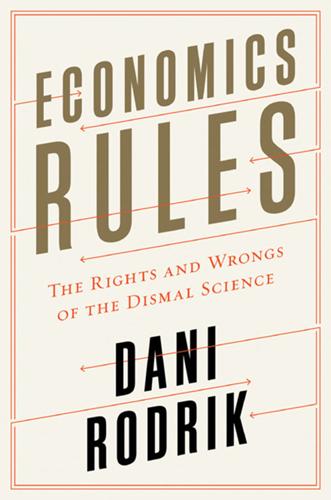
Economics Rules: The Rights and Wrongs of the Dismal Science
by
Dani Rodrik
Published 12 Oct 2015
With the addition of a longish list of extra assumptions—on which, more later—this model also generates rather strong implications about how well markets work. In particular, a competitive market economy is efficient in the sense that it is impossible to improve one person’s well-being without reducing somebody else’s. (This is what economists call “Pareto efficiency.”) Consider now a very different model, called the “prisoners’ dilemma.” It has its origins in research by mathematicians, but it is a cornerstone of much contemporary work in economics. The way it is typically presented, two individuals face punishment if either of them makes a confession. Let’s frame it as an economics problem. Assume that two competing firms must decide whether to have a big advertising budget.
…
Pairing economic models with fables may seem to denigrate their “scientific” status. But part of their appeal is that they work in exactly the same way. A student exposed to the competitive supply-demand framework is left with an enduring respect for the power of markets. Once you work through the prisoners’ dilemma, you can never think of problems of cooperation in quite the same way. Even when the specific details of the models are forgotten, they remain templates for understanding and interpreting the world. The analogy is not missed by the profession’s best practitioners. In their self-reflective moments, they are ready to acknowledge that the abstract models they put to paper are essentially fables.
…
So we need to use judgment when selecting the fable that applies to a particular situation. Economic models require the same discernment. We’ve already seen how different models produce different conclusions. Self-interested behavior can result in both efficiency (the perfectly competitive market model) and waste (the prisoners’ dilemma model) depending on what we assume about background conditions. As with fables, good judgment is indispensable in selecting from the available menu of contending models. Luckily, evidence can provide some useful guidance for sifting across models, though the process remains more craft than science (see Chapter 3).
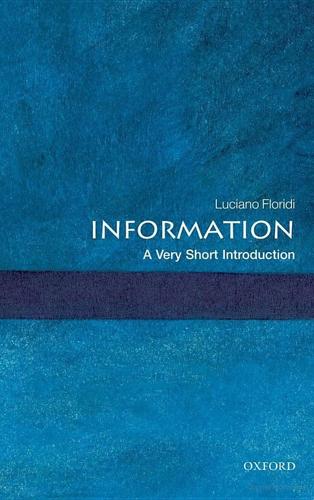
Information: A Very Short Introduction
by
Luciano Floridi
Published 25 Feb 2010
Another way of defining complete information is in terms of common knowledge: each player knows that each player knows that... each player knows all other players, their strategies, and the corresponding payoffs for each player. Typical examples include the rock-paperscissors game and the prisoner's dilemma. There is no need to describe the former but the latter is sufficiently complex to deserve some explanation. We owe the logical structure of the prisoner's dilemma to the Cold War. In 1950, RAND Corporation (Research ANd Development, a non-profit think tank initially formed to provide research and analysis to the US armed forces) was interested in game theory because of its possible applications to global nuclear strategy.
…
I am very grateful to the Akademie der Wissenschaften in Gottingen, for the privilege of being elected Gauss Professor during the academic year 2008-9, and to the University of Hertfordshire, for having been generous with my teaching schedule while visiting Gottingen and completing this book. 1 A typical information life cycle 5 2 A map of information concepts 20 3 Analogue, digital, and binary data 24 4 Types of data/ information 30 5 Environmental data/ information 32 6 Information as semantic content 34 7 The mathematical theory of communication (MTC) 38 8 Communication model 39 9 Factual semantic information 49 10 Virtual information in natural deduction 57 11 Physical information 61 12 Maxwell's demon 64 13 Biological information 74 14 DNA and the genetic code 78 15 Genetic information 81 16 Abstract scheme of a neuron 83 17 Economic information 89 18 A simple application of Bayes' theorem 101 19 The 'External' R(esource) P(roduct) T(arget) Model 104 20 The 'Internal' R(esource) P(roduct) T(arget) Model 110 Table 1 The General Definition of Information (GDI) 21 Table 2 Decimal and binary notations of positive integers 27 Table 3 Example of binary encoding 28 Table 4 Environmental information 33 Table 5 Examples of communication devices and their information power 41 Table 6 The definition of factual semantic information 50 Table 7 The normal form of a typical prisoner's dilemma 94 The goal of this volume is to provide an outline of what information is, of its manifold nature, of the roles that it plays in several scientific contexts, and of the social and ethical issues raised by its growing importance. The outline is necessarily selective, or it would be neither very short nor introductory.
…
In 1950, RAND Corporation (Research ANd Development, a non-profit think tank initially formed to provide research and analysis to the US armed forces) was interested in game theory because of its possible applications to global nuclear strategy. Merrill Flood (born 1912) and Melvin Dresher (19111992) were both working at RAND and they devised a gametheoretic model of cooperation and conflict, which later Albert Tucker (1905-1995) reshaped and christened as the `prisoner's dilemma'. Here it is. Two suspects, A and B, are arrested, but with insufficient evidence for a full conviction. So, once they are separated, each of them is offered the following deal. If one testifies against (defects from) the other, and the other remains silent (cooperates), the defector will not be charged but the cooperator will receive the full ten-year sentence.
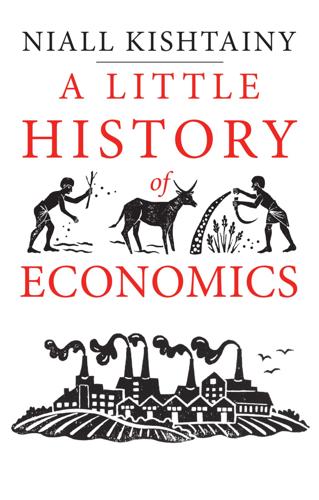
A Little History of Economics
by
Niall Kishtainy
Published 15 Jan 2017
Classification: LCC HB71 .K527 2017 | DDC 330.09—dc23 LC record available at https://lccn.loc.gov/2016042806 A catalogue record for this book is available from the British Library. 10 9 8 7 6 5 4 3 2 1 Contents 1Cool Heads and Warm Hearts 2The Soaring Swans 3God’s Economy 4Going for Gold 5Nature’s Bounty 6The Invisible Hand 7Corn Meets Iron 8An Ideal World 9Too Many Mouths 10Workers of the World 11A Perfect Balance 12Shut Out the Sun 13The Profits of War 14The Noisy Trumpeter 15Coke or Pepsi? 16The Man With a Plan 17Flashing your Cash 18Down the Plughole 19Creative Destruction 20The Prisoners’ Dilemma 21The Tyranny of Government 22The Big Push 23The Economics of Everything 24Growing Up 25Sweet Harmony 26A World in Two 27Fill Up the Bath 28Ruled by Clowns 29Money Illusion 30Future Gazing 31Speculators on the Attack 32Saving the Underdog 33Knowing Me, Knowing You 34Broken Promises 35Missing Women 36Minds in Fog 37Economics in the Real World 38Bankers Go Wild 39Giants in the Sky 40Why Be an Economist?
…
The problem with calls for the government to sort out the economy is that they view capitalism in the short run and so favour quick fixes. Schumpeter thought the fixes would only suffocate entrepreneurship, put capitalism on a life-support machine for a while, and then kill it off. CHAPTER 20 The Prisoners’ Dilemma Imagine two countries threatening to blow each other up. One arms itself with missiles to aim at its enemy, and because one does, so does the other. Each country tries to gain an advantage by buying weapons. The result is an ‘arms race’. Both end up with huge stocks of missiles aimed at their enemy.
…
Given that my enemy buys missiles, then my best response is to do the same: the worst thing would be to be unarmed in the face of enemy threats. The same reasoning applies to my enemy: if I arm, then they should definitely arm. Both of us building up our stock of missiles is the equilibrium of the game. The arms race is a version of a really famous game, the ‘prisoners’ dilemma’, which was invented by mathematicians at RAND. In the game, two gangsters are arrested for robbing a bank. The police don’t have much evidence but know that they can at least convict the gangsters of tax evasion. The gangsters are questioned separately. Each can confess to the robbery or deny it.
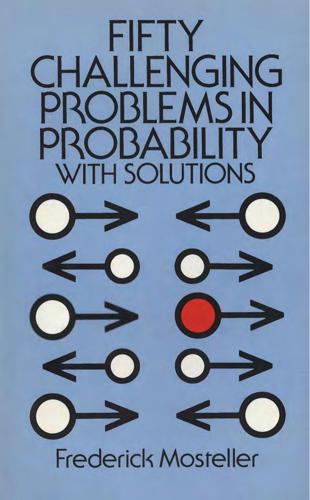
Fifty Challenging Problems in Probability With Solutions
by
Frederick Mosteller
Published 15 May 1965
The sock drawer Successive wins The flippant juror IS. 16. 17. 18. The theater row Will second-best be runner-up? Trials until first success Coin in square Chuck-a-luck . Curing the compulsive gambler Perfect bridge hand . Craps An experiment in personal taste for money Silent cooperation Quo vadis? . The prisoner's dilemma 14. Collecting coupons, including Euler's approximation for harmonic sums 19. 20. 21. 22. 23. 24. 25. 26. 27. 28. Twin knights . An even split at coin tossing, including Stirling's approximation Isaac Newton helps Samuel Pepys The three-cornered duel Should you sample with or without replacement?
…
Two strangers who have a private recognition signal agree to meet on a certain Thursday at 12 noon in New York City, a town familiar to neither, to discuss an important business deal, but later they discover that they have not chosen a meeting place, and neither can reach the other because both have embarked on trips. If they try nevertheless to meet, where should they go? 13. The Prisoner's Dilemma Three prisoners, A, B, and C, with apparently equally good records have applied for parole. The parole board has decided to release two of the three, and the prisoners know this but not which two. A warder friend of prisoner A knows who are to be released. Prisoner A realizes that it would be unethical to ask the warder if he, A, is to be released, but thinks of asking for the name of one prisoner other than himself who is to be released.
…
That there are two important railroad stations seems to me to remove them from the competition. That leaves the Empire State Building or Times Square. I would opt for the Empire State Building, because Times Square is getting vaguely large these days. I think their problem would have been easier if they had been meeting in San Francisco or Paris, don't you? 13. The Prisoner's Dilemma Three prisoners, A, B, and C, with apparently equally good records have applied for parole. The parole board has decided to release two of the three, and the prisoners know this but not which two. A warder friend of prisoner A knows who are to be released. Prisoner A realizes that it would be unethical to ask the warder if he, A, is to be released, but thinks of asking for the name of one prisoner other than himself who is to be released He thinks that before he asks, his chances of release are 1.
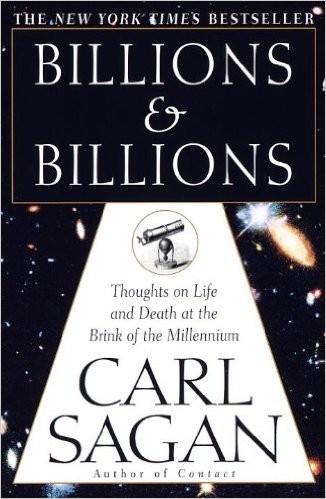
Billions & Billions: Thoughts on Life and Death at the Brink of the Millennium
by
Carl Sagan
Published 11 May 1998
Then, if your friend pleads innocent while you plead guilty, well, too bad for him, and you might get off scot-free. When you think it through, you realize that whatever your friend does you're better off defecting than cooperating. Maddeningly, the same holds true for your friend. But if you both defect, you're both worse off than if you had both cooperated. This is the Prisoner's Dilemma. Now consider a repeated Prisoner's Dilemma, in which the two players go through a sequence of such games. At the end of each they figure out from their punishment how the other must have pled. They gain experience about each other's strategy The Rules of the Game • 227 (and character). Will they learn to cooperate game after game, both always denying that they committed any crime?
…
They go deep into our evolutionary past. They were with our ancestral line from a time before we were human. The Prisoner's Dilemma is a very simple game. Real life is considerably more complex. If he gives our apple to the pencil man, is my father more likely to get an apple back? Not from the pencil man; we'll never see him again. But might widespread acts of charity improve the economy and give my father a raise? Or do we give the apple for emotional, not economic rewards? Also, unlike the players in an ideal Prisoner's Dilemma game, human beings and nations come to their interactions with predispositions, both hereditary and cultural. 230 • Billions and Billions But the central lessons in a not very prolonged round-robin of Prisoner's Dilemma are about strategic clarity; about the self-defeating nature of envy; about the importance of long-term over short-term goals; about the dangers of both tyranny and patsydom; and especially about approaching the whole issue of rules to live by as an experimental question.
…
Our vision is dangerously narrow if all we know is win-lose. The scientific field that deals with such matters is called game theory, used in military tactics and strategy, trade policy, corporate competition, limiting environmental pollution, and plans for nuclear war. The paradigmatic game is the Prisoner's Dilemma. It is very much non-zero-sum. Win-win, win-lose, and lose-lose outcomes are all possible. "Sacred" books carry few useful insights into strategy here. It is a wholly pragmatic game. Imagine that you and a friend are arrested for committing a serious crime. For the purpose of the game, it doesn't matter whether either, neither, or both of you did it.
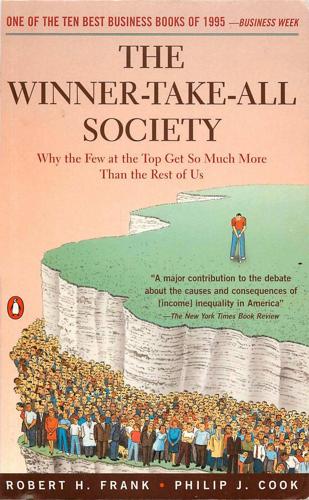
The Winner-Take-All Society: Why the Few at the Top Get So Much More Than the Rest of Us
by
Robert H. Frank, Philip J. Cook
Published 2 May 2011
We will describe how such contests almost invariably summon mutually offsetting, and so cially wasteful, patterns of competitive investment that reinforce the inefficiencies we identified with overcrowding in chapter 6. The Prisoner's Dilemma The basic difficulty here is that the incentives to invest in performance enhancement confront contestants in winner-take-all markets with the familiar prisoner's dilemma, one of the most powerful metaphors in modern social theory. Many credit it to mathematician A. W. Tucker, who is said to have been the first to employ the anecdote from which it draws its name. As the story goes, two men are being held in sepa rate cells for a crime they did, in fact, commit.
…
And yet when you both confess, you each get five years, rather than the one The Problem o/Waste/ul Investment 127 year you would have gotten had you both remained silent. Hence the dilemma. The prisoner's dilemma captures the essence of an important class of problems in which actions that seem compellingly attractive to indi viduals yield results that are unattractive to the group as a whole. The military arms race is a prisoner's dilemma. Both antagonists do better if neither invests in armaments than if both do. Yet each side faces compelling temptations to invest, for it knows that the worst of all possibilities is for its rival to invest while it does not.
…
And it is a mathematical impossibility for each contes tant's chances of winning to rise with investment, no matter how much he or she might invest. The lawsuit will have only a single winner no matter how many hours opposing counsel spend on legal research. Contestants in winner-take-all markets-indeed, the participants in virtually any contest--confront either a two-person or a multiperson version of the prisoner's dilemma described above. The extent to which investments in performance enhancement in crease the market value of the winning contestant's performance will vary from case to case. In some cases-our soapbox-derby example is one-individual investments will have virtually no effect on the value of the final product.
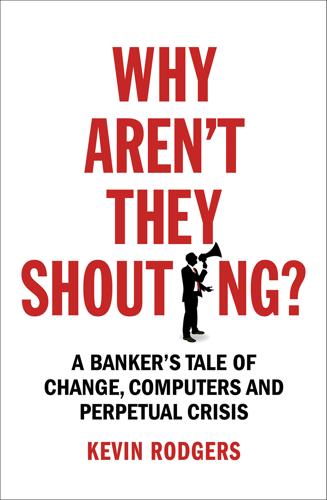
Why Aren't They Shouting?: A Banker’s Tale of Change, Computers and Perpetual Crisis
by
Kevin Rodgers
Published 13 Jul 2016
Whether the motivation was the fun of building systems, the desire for money or glory, the fear of losing your job or, as became the case for me in the latter stages of my career, the fear of having to announce layoffs to people who were my colleagues and friends – no task in business is more depressing and unpleasant – whatever the motivation, the urge or need to compete would have had the same result. The Prisoners’ Dilemma caused by the power of computers prompted us all to push the market to a new, shaky equilibrium. The only unknown was whether in the process, to paraphrase General Patton, you would get fired from your firm, or whether you would make sure that the other poor son of a bitch would get fired from his.
…
Besides, LIBOR is an averaged number anyway – my submission will have only a small effect. Further, he might have thought, some other bank must have the opposite position to us – what happens if that bank’s desk submits a low rate? My bank may lose out if I don’t go high. It was another minor version of the Prisoners’ Dilemma. Certainly, none of those involved seemed to take much care to cover their tracks. At Barclays alone, ‘between January 2005 and May 2009, at least 173 requests for US dollar LIBOR submissions were made to Barclays’ Submitters’7 – that is, on around one day in six someone tried to coax a submitter into helping out.
…
Worryingly, there is one aspect of the way fines are levied that could trigger a spiralling electronic surveillance arms race: it matters greatly how fast a bank discovers a problem because, in the EU and US (the major centres of finance), the bank that is the first to confess can have its fine reduced or set aside. UBS and Barclays both benefited from this in the LIBOR investigation.20 It is the familiar Prisoners’ Dilemma with billions of dollars at stake. The competition to be fastest is already under way. Message surveillance has been the first big area for banks’ efforts. I have heard it said that managers in banks tarnished by a scandal like LIBOR either knew what was going on – in which case they were criminals – or did not, which meant they were fools.
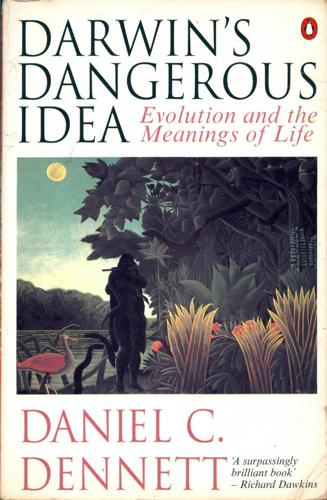
Darwin's Dangerous Idea: Evolution and the Meanings of Life
by
Daniel C. Dennett
Published 15 Jan 1995
Moving beyond the most businesslike and brutal forms of reciprocal altruism towards a world in which genuine trust and sacrifice are possible is a task that has begun to be explored theoretically. The first major step was Robert Axelrod's (Axelrod and Hamilton 1981, Axelrod 1984) Prisoner's Dilemma tournaments, which invited all comers to submit strategies — algorithms — for competing against all comers in a reiterated Prisoner's Dilemma tournament. (Among the many discussions of this topic, two of the best are Dawkins 1989a, ch. 12, and Poundstone 1992.) The winning strategy became justly famous: Tit for Tat, which simply copies the "opponent's" previous move, cooperating in reward for past cooperation, and defecting in retaliation against any defections.
…
The fundamental insight that unites game theory and evolutionary theory is that the "rational principles — whatever that may mean" that "guide" agents in competition can exert their influence even on such unconscious, unreflective semi-agents as viruses, trees, and insects, because the stakes and payoff possibilities of competition determine which lines of play cannot help winning or losing if adopted, however mindlessly they are adopted. The best-known example in game theory is the Prisoner's Dilemma, a simple two-person "game" which casts shadows, both obvious and surprising, into many different circumstances in our world. Here it is in basic outline (excellent detailed discussions of it are found in Poundstone 1992 and Dawkins 1989a). You and another person have been imprisoned pending trial (on a trumped-up charge, let's say), and the prosecutor offers each of you, separately, the same deal: if you both hang tough, neither confessing nor implicating the other, you will each get a short sentence (the state's evidence is not that strong); if you confess and implicate the other and he hangs tough, you go scot free and he gets life in prison; if you both confess and implicate, you both get medium-length sentences.
…
Of course, if you hang tough and the other person confesses, he goes free and you get life. What should you do? If you both could hang tough, defying the prosecutor, this would be much better for the two of you than if you both confess, so couldn't you just promise each other to hang tough? (In the standard jargon of the Prisoner's Dilemma, the hang-tough option is called cooperating.) You could promise, but you would each then feel the temptation — whether or not you acted on it — to defect, since then you would go scot free, leaving the sucker, sad to say, in deep trouble. Since the game is symmetrical, the other person will be just as tempted, of course, to make a sucker of you by defecting.

Here Comes Everybody: The Power of Organizing Without Organizations
by
Clay Shirky
Published 28 Feb 2008
Similarly, if I stick to my story in an attempt to get the night in jail, you can turn me in to try to get the reward, but if we both try to get the reward, we both get charged—back to the worst outcome again. This is a simplified version of the Prisoners’ Dilemma, a social science thought experiment about how people make decisions. (The payoff matrix is bit more complex in the standard version, but the dilemma is the same.) Assuming that the two people can’t communicate with each other and don’t trust each other (about which more in a moment), the worst outcome—number four—is the rational one, an outcome called a Nash equilibrium. The dilemma of the Prisoners’ Dilemma is that, because it is a one-off transaction in which you and I can’t communicate with each other, we can’t coordinate any outcome better than the dismal Nash equilibrium.
…
The dilemma of the Prisoners’ Dilemma is that, because it is a one-off transaction in which you and I can’t communicate with each other, we can’t coordinate any outcome better than the dismal Nash equilibrium. (This is the same math underlying the Tragedy of the Commons, where the Nash equilibrium encourages individual defection, even as it damages the group.) Things change, though, when the prisoners interact with each other repeatedly, a version called an iterated Prisoners’ Dilemma. Robert Axelrod, a sociologist at the University of Michigan who studied the iterated version extensively, staged tournaments for different software programs emulating the prisoners. Each program was given a strategy for when to cooperate and when to defect (the same two choices you and I faced in our notional interrogation rooms).
…
If the other program defected, though, taking advantage of Tit-for-Tat’s trusting behavior, then Tit-for-Tat would defect against that program in the next round, effectively punishing the other program as a way of communicating that its trusting nature extended only to those who reciprocate. This strategy is a highly simplified version of real life—the more general lesson is that people who interact with one another repeatedly communicate through their actions, introducing what Axlerod calls “the shadow of the future.” We all face the Prisoners’ Dilemma whenever we interact with people we could take advantage of, or people who could take advantage of us, yet we actually manage to trust one another often enough to accomplish things in groups. The shadow of the future makes it possible for me to act on your behalf today, even at some risk or cost to me, on the expectation that you will remember and reciprocate tomorrow.

Forty Signs of Rain
by
Kim Stanley Robinson
Published 29 May 2004
Thus along with all the jockeying and frustration came the almost subliminal satisfactions of winning a competition, or the grudging solidarities of cooperating to mutual advantage. Let that poor idiot merge before his on-ramp lane disappeared; it would pay off in the overall speed of traffic. Thus the little primate buzz. When things went well. But so often what one saw were people playing badly. It was like a giant game of prisoners’ dilemma, the classic game in which two prisoners are separated and asked to tell tales on the other one, with release offered to them if they do. The standard computer model scoring system had it that if the prisoners cooperate with each other by staying silent, they each get three points; if both defect against the other, they each get one point; and if one defects and the other doesn’t, the defector gets five points and the sap gets zero points.
…
Or, the most powerful strategy Frank knew of, an irregularly generous tit for tat, where you forgave defecting opponents once before turning on them, but only about a third of the time, and unpredictably, so you were not regularly taken advantage of by one of the less cooperative strategies, but could still pull out of a death spiral of tit-for-tat feuding if one should arise. Various versions of these firm but fair irregular strategies appeared to be best if you were dealing with the same opponent over and over. In traffic, at work, in relationships of every kind—social life was nothing but a series of prisoners’ dilemmas. Compete or cooperate? Be selfish or generous? It would be best if you could always trust other players to cooperate, and safely practice always generous; but in real life people did not turn out to earn that trust. That was one of the great shocks of adolescence, perhaps, that realization; which alas came to many at an even younger age.
…
He got back in and drove south to the NSF building, involuntarily reliving the experience. He had no clear idea why it had happened. He had driven around the guy but he had not really cut him off, and though it was true he had been poaching on 66, so had the guy. It was inexplicable. And it occurred to him that in the face of such behavior modeling devices like prisoners’ dilemma were useless. People did not make rational judgments. Especially, perhaps, the people driving too-large pickup trucks, this one of the dirty-and-dinged variety rather than the factory-fresh steroidal battleships that the area’s carpenters drove. Possibly then it had been some kind of class thing, the resentment of an unemployed gas-guzzler against a white-collar type in a fuel-cell car.
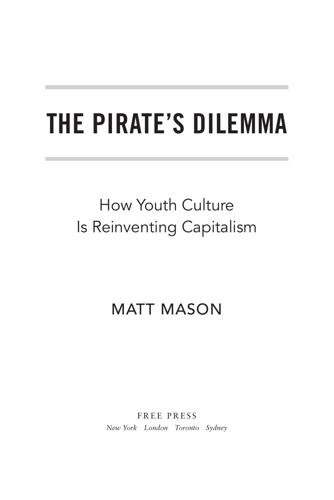
The Pirate's Dilemma: How Youth Culture Is Reinventing Capitalism
by
Matt Mason
Game theory examines situations where multiple players in a game make decisions based on what the other players will do, like an academic version of poker. It is used to model social situations in which decision makers interact with other agents, and often assumes individuals will act only in their own self-interest. A game called the Prisoner's Dilemma is a simple, well-known game used to illustrate this point. Developed in the 1950s by the RAND corporation (a global policy think tank which advises the U.S. armed forces, among other things), the game goes like this: two suspects, Prisoner A and Prisoner B, are caught with stolen goods and arrested under suspicion of burglary.
…
This simple game of two paranoid prisoners trying to cut a shady deal helped shape the structure behind the supposedly dog-eat-dog world we live in. Game theory is an incredibly useful tool, and more advanced versions of the game allow for cooperation between players, but according to the most basic Prisoner's Dilemma game outlined here, the idea of people acting in the interests of one another is naive. But in practice, it is obvious the game is flawed. The most basic assumption—that we all act only in our own self-interest—is simply not true. When economists test this theory, real people do not always act this way.
…
If a developing nation can't afford name-brand, life-saving drugs, those brands will always have to deal with pill pirates in those markets. Prohibition is unlikely to work in these cases, and inefficient industries will continue to have a problem until they react in the marketplace instead of the courts. The decision each player makes about how to respond also poses a threat to the other player, as it does in a Prisoner's Dilemma. If pirates begin to have a serious effect on their market share, both Players A and B will (or at least, should) be tempted to compete with them. If either decides to compete with pirates by moving into the new market space, they can also cut into the market share of their competitor. Imagine Players A and B are drug companies, and the pirates are those producing generic pills in a developing country.
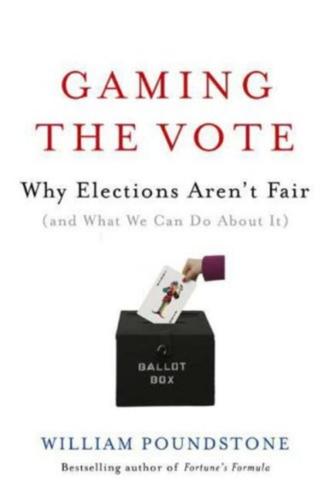
Gaming the Vote: Why Elections Aren't Fair (And What We Can Do About It)
by
William Poundstone
Published 5 Feb 2008
Mar. 2[. 2006. 202 "a hobby, looked at on weekends": Ibid. 202 "was telling me aboul Arrow's theorem': Ibid, 202 "Like an addiction": Ibid, 202 'They asked me what voting method": Ibid, 203 ''I'll leave it to your imagination--, Ibid. 203 "Well, now there's a quandary", Ibid. 203 "Brarns and Fishburn objected to the paper"· Ibid. 203 "We began Our analysis", Saari and Van Newenhizen 1988a, 103. 203 "bizarre cases": Brams, Fishburn, and Merrill 1988a, 124. 204 "AV [approval voting] is much worse'", Saari and Van Newenhizen 1988b, 1-'3-34. 204 "A more accurate title for AV': Ibid" 142. 204 "It may make good sense": Ibid. 204 "'Dad, did you ever write a paper"': Saari, interview. 204 "'Steve's a good person'", Ibid. 207 "While the behavioml assumptions": Ibid. 208 "Although excellence is the dear choice", Saari and Van Newenhizen 1988b, 139, 208 "Indeed. these problems": Ibid., 1988b, 146-47, 306 Notes 208 "Let me give you", Saari, interview. 210 Article on Perot and approval voting: Beams and Merrill ]994, 210 "authoritarian and conspiratorial'" Ibid.. 40. 2 [0 "Clinton could Iulve come", Tabarrok 200!, 288. 210 "[ndeterminacy, like inconsistency", Brams, Fishburn, Merrill 1988a, 129, 213 'The primary challenge", Weber, personal e-mail, Apr, 25, 2006. 213 Humphrey's advisors wanted Ventura in debates: Sifry 2002, 22. 214 Similar to a 'prisoner's dilemma', [n a true prisoner's dilemma, the worst outcome is to cooperate while your partner(s) betray you, In the approval voting case, the worst scenario is for everyone (Goodell's and Ottinger's supporters) to betray each other. This results in the election of BudJey. the "worst" candidate to liberals, 214 "This is the paper'" Weber, personal e-mail, Apr, 25, 2006. 217 'The great weakness": Letter.
…
What I should do is to vote just for Ottinger. That will increase the chance that Ottinger rather than Goodell will win. I don't have to worry about Buckley. The polls say he's way behind." If all the liberals vote just for their favorite, Buckley will win! This type of paradox is familiar to game theorists. It is similar to a "prisoner's dilemma," the all-too-common situation where narrow selfinterest subverts the common good. Weber aired these concerns at a lunchtime seminar at Northwestern's Kellogg School of Management. One of those present, Roger B. Myerson, saw a clever way of treating the problem. Myerson and Weber ended up collaborating on a 1993 article, "A Theory of Voting Equilibria."
…
Pomper, ed'), Chatham, N.J., Chatham House. Pooley, Eric (1996). "Who [s Dick Morris?" Time, Sept. 2, 1996. Posner, Gerald (I977). Citizen Perot. New York: Random House, Potter, Dena (2006). "Falwell Defends Clinton-Satan Remark." ChiC<lgo Sun-TimeS, Sept. 26, 2006. Poundstone, William (l992). Prisoner's Dilemma. New York: Double.:!ay, Public Broadcasting Service (2005). "Karl Rove-the Architect.'" TV show, video and tran· scripts at www.pbs.orglwgbh/pagesifrontlineJshows/archilect. Purnick, Joyce (2004), "Data Crunchers Try to Pinpoint Voters' Politics." The N/!W York Times, Apr. 7, 2004. Raskin, Jamin (2004), 'The Return of Vote-Pairing."
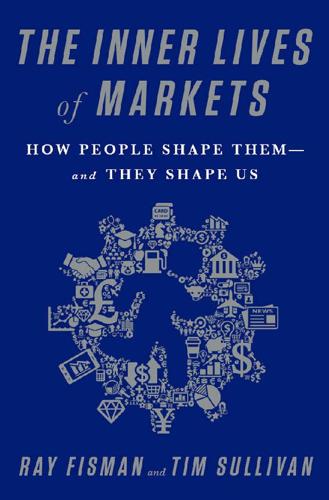
The Inner Lives of Markets: How People Shape Them—And They Shape Us
by
Tim Sullivan
Published 6 Jun 2016
The dilemma is that both could be best off if only they’d both stay quiet. The cruel genius of the prisoners’ dilemma is that selfish motivations undermine the prisoners’ common good. In Ross et al.’s version of the prisoner’s dilemma, instead of prison time, pairs of lab subjects earn money based on whether they cooperate or defect. But as with the classic formulation, subjects can always increase their earnings by defecting, even though members of a pair would be better off if only they’d both cooperate. Ross’s innovation was to reframe the prisoners’ dilemma as either the Wall Street game or the community game. The payoffs—and so the incentives to defect or cooperate—were identical.
…
If a hedge fund manager earns 30 percent on returns, we assume she’s a genius, when in fact she almost certainly just got lucky.4 This failure in judgment was so central to how we judge others that Ross termed it the fundamental attribution error, and it serves as a potent illustration of the power of circumstance rather than individual volition in explaining the choices we make. A 2004 study by Ross and a pair of coauthors provides some intriguing insights into how “the market” affects how we behave. The study focused on a game called the prisoners’ dilemma, a staple of game theory, which presents the following quandary to a pair of criminals. Both have been arrested, and the cops are trying to elicit a confession from each suspect separately, offering them both the same deal: if one testifies against the other while the other remains silent, the confessor goes free and the silent one suffers the full force of the law, let’s say ten years in jail.
…
Woods store, 1–2 person’s life, value of, 166–167 philanthropic commitments, 72–75 Pillow Pets, 128–129 platforms babysitting, 121 Champagne fairs as, 126–128 competition, 124–126 credit card, 113–116 economics of, 107–112 greed in, 128–129 mobile market, 116 multisided, 14 rules for, 112–117 video game system, 116 See also economics Podolny, Joel, 39, 43 poker, bluffing in, 26 See also chess; Cold War Pontiff, Jeffrey, 11–12 posting system, 79–81, 100–101 POW camps, 7–13, 175–177 power law distributions, 22 practice, market, 14–15 Prendergast, Canice, 154–160 “Price and Advertising Signals of Product Quality” (Milgrom and Roberts), 70–71 price discovery, 83 priceless, when something is, 132–133 prisoners’ dilemma game, 178–179 property, expected value of, 56 Radford, R. A., 7–10, 22–23 Ranau Japanese POW camp, 10–11 RAND Corporation, 25, 27, 134–136 reality-based economic modeling, 35–37, 49–51, 141 See also lemon markets theory recessions, 36, 48, 75 Roberts, John, 66, 70–71 Ross, Lee, 177–179 Roth, Al, 140, 141, 163–165 rush, fraternity/sorority, 140 Rutland, VT, 1 Rysman, Marc, 109 Samuelson, Paul, 28–29, 44 Samuelson, William, 55–57 San Fernando Valley gangs, 61–62 San Fers gang, 61–62 Sandakan camp, Borneo, 10–11 Sauget, IL, 168–169 scams internet, 52–55 money-back, 69–70 Scarf, Herbert, 163–164 school choice, in Sweden, 151–152 school to student matching, 138–139, 141–142, 143–149 Schultz, Theodore, 35 Schumpeter, Joseph, 24, 49–50 Scottish auctions, 82 Sears, 115–116 second-bid auction, 81–82 second-price sealed-bid auctions, 87–89 “Selection process starts with choices, ends with luck” (article), 146 self-destructive behaviors, signaling theory and, 67–68 selfish, markets making us, 177–179 seller misrepresentation, 52–55 sellers, knowing more than buyers, 41, 44–55 Seven Minute Abs, 172 Shakin’ Cat Midgets gang, 61 Shapley, Lloyd, 134–136, 137–138, 163–164 Shapley-Gale algorithm, 137–140 Shi, Peng, 148 Shleifer, Andrei, 180–181 shopping malls, as two-sided markets, 122–123 Shoup, Carl, 85 sick organizations, 142–143 signaling model applications of, 66–68 commitment signs, 62–66 competitive signaling, 69–71 integrity, 71–75 Silicon Valley, market friction and, 169–173 Skoll, Jeff, 39–40, 43, 51 Smith, Adam, 21 Snider, James, 42 social efficiency, auctions, 89 social well-being, assessing, 22 Solow, Robert, 35 Solow model, 35 Sönmez, Tayfun, 144 Sony’s Blu-ray format war, 125–126 sorority rush, 140 spectrum auction theory, 102–103 Spence, Michael, 62–66 Stack, Charles, 42–43 Stalag VII-A POW camp market, 5–6, 7–10, 13 stamp collecting, 82–84 Stiglitz, Joseph, 35–36, 76, 182 strategy proofness mechanism, 145 student to school matching, 138–139, 141–142, 143–149 Summers, Larry, 166–167 Super Bowl advertising, 70–71 supply and demand, 96 survival rates, of Japanese vs.

Evil Genes: Why Rome Fell, Hitler Rose, Enron Failed, and My Sister Stole My Mother's Boyfriend
by
Barbara Oakley Phd
Published 20 Oct 2008
This strategy alternately cajoles and browbeats people into forming a win-win way of working together. A memorable set of competitions organized over a quarter century ago by political science professor Robert Axelrod showcased just how successful the strategy could be. A version of the game “Prisoner's Dilemma” was used as the basis for Axelrod's competition. In Prisoner's Dilemma, two suspects are jailed separately and given a choice as to whether or not to squeal on their partner. If one partner gives in to the temptation, that partner goes free, and the other—the sucker—is left with an extended jail sentence. If neither partner squeals, however, both serve short jail sentences and then are set free.
…
Obviously the best mutual strategy is to both stay silent and take the significantly reduced jail time. But a misjudgment of the partner's loyalty can prove devastating. What's a prisoner to do? Axelrod invited game theorists, computer scientists, psychologists, teenage game freaks, and the general public to submit strategies for winning an iterated version of Prisoner's Dilemma in a massive tournament. The submitted strategies were then played off against one another. One parameter that Axelrod was able to tweak in his simulations proved crucial—whether the players expected to meet again. (This was set up mathematically with a discount weighting factor, w, related to the relative importance of the next move.)
…
See executive attentional network attention deficit disorder illustration showing overlap with borderline personality disorder, 208 MAO-A and, 80–81 polio and, 116 Auerbach, “Red,” mental flexibility of, 301 Authoritarian Personality, The (Theodor Adorno), 46 autism gray matter and, 106 mirror neurons and, 105 avoidant personality disorder, defined, 135 Axelrod, Robert, and game “Prisoner's Dilemma,” 257–58 Axis I and Axis II of DSM-IV, defined, 133–34 Babiak, Paul, and Robert Hare (Snakes in Suits: Why Psychopaths Go to Work), 107 Bafti, adopted son of author and her husband, 151–52, 153, 169–70 Baldwin, Mark, 264 Baldwinian evolution, 263–64 Ballas, Jerry, on “Chainsaw” Al Dunlap: “it's terrorizing working for the man,” 294 “banality of evil,” Hannah Arendt, 303n Bardeen, John, Nobel prize winner blocked by William Shockley, 290 BDNF (brain-derived neurotrophic factor) gene, 77–78 Beatles, The: assistance by manic-depressive “drama queen” Brian Epstein, 291 behaviorism, restrictive effect on research, 41, 174 Behr, Edward (Ceausescu biographer), 270–71 Betzig, Laura, Despotism and Differential Reproduction, 268 Bing, Stanley (Rome, Inc.), 276n bioengineering, description of, 31 bipolar personality disorder.
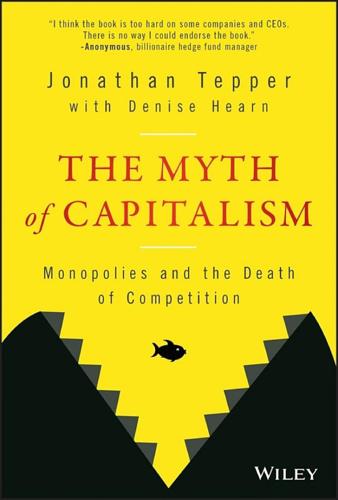
The Myth of Capitalism: Monopolies and the Death of Competition
by
Jonathan Tepper
Published 20 Nov 2018
There is much more to game theory than walking into a bar to talk to a blonde or dividing a cake. The most famous example in game theory is The Prisoner's Dilemma. If two prisoners are caught by the police and interrogated separately, they each have a difficult choice to make: to snitch or not to snitch. They can both be silent and not rat on each other. That is the best outcome for both. However, if one of them wants to improve his own lot, he might talk to the police and betray his friend. He might walk, and his friend will serve a longer sentence. There is no right answer to the Prisoner's Dilemma. If you play the game only once, you are highly motivated to betray your partner.
…
If you play the game only once, you are highly motivated to betray your partner. However, completely different solutions begin to emerge if you play the game many times. In 1984 Robert Axelrod invited mathematicians, economists, and computer scientists to submit strategies for playing Prisoners' Dilemma. What he found surprised him. Strategies in the competition could either cooperate with each other or try to punish each other, but rather than play once, they had to play repeatedly until a victor emerged. The computer programs could not speak to each other or know each other's intentions. All they could do was observe what the other program did in the previous games.
…
Paul, 158 McKesson, price-fixing allegations, 131 McLaughlin, Patrick A., 179 McNamee, Rogert, 113 Measure of America report, 114 Meat industry, oligopolies, 132–133 Meat processing firms, ownership timeline (changes), 134f Media, oligopolies, 133, 135 Medical care, oligopolies, 129 Mega merger waves, 163f Mellon, Carnegie, 139 Mergers changes, 9f enforcement, death, 163 impact, 43–44 mega waves, 163f merger-induced price increases, evidence, 42 prices, increase, 44 rejection, standard/basis, 243 reversal, 243 solutions/remedies, 242–245 studies, 60 waves, 145f, 154 Mergers and acquisitions (M&As) impact, 12 proportion, 164f Mergers, Merger Control, and Remedies, (Kwoka), 42 Metcalfe's Law, 98 Michaely, Roni, 8, 13 Microprocessors, monopolies/local monopolies, 121 Microsoft monopoly, 93 operating system market share, 117 “Middle America,” revolt, 58 Miliband, Ed, 215 Milk, monopolies/local monopolies, 118–119 MillerCoors, creation, 123 Mill, John Stuart, 22 Minimax theory, 27 Mnuchin, Steven, 189 Moeran, Shivaun, 87–88 Mogridge, Martin, 18–19 Molson Coors beer market dominance, 188 SABMiller, duopoly, 123 Money, spending, 247 Monocultures, danger, 59 Monopolies, 15 competition, impact, 179 condemnation (Truman), 146 defining, 37–38 factors, 16 impact, 116–122 King Kong, comparison, 35 Monopolists, barrier entry, 245 Monopoly Machine, 15–16 usage, 51 Monopoly Rules, 5–6 Monopsonies, 37–38, 71 meaning, 74 power, 85 ranking, 73f Monsanto Bayer purchase, proposal, 119, 121 federal government, revolving door, 193f lobbying spending, 192 Moody's, return on invested capital (ROIC), 183 Moore, Gordon E., 66 Morganizing (Morganization), 195, 196, 209, 240 Morgan, John Pierpont, 143, 195 Buffett, comparison, 198 failing company finance, 196 inheritance, 208 Mueller, Holger M., 39 Mukherjee, Siddhartha, 167 Munger, Charlie, 2 Murdoch, Rupert, 133 “My Fellow Zillionaires” (Hanauer), 231–232 N Nakaji, Peter, 35–36 Nash, John, 26 National Dairy Holdings, price fixing, 119 Nationally Recognized Statistcal Rating Organization (NRSRO), 183–184 Navalny, Alexei, 92 Nazis, trusts (commonality), 137 NBCUniversal, Comcast purchase, 6–7 NBC Universal, market dominance, 133 Net investment (nonfinancial businesses), 205f Netscape, Microsoft (impact), 93 Net wealth shares (United States), 230f Network Effects, 15, 98 self-reinforcement, 103–104 Nevins, Allan, 156 New Deal, 78 “New Poor,” 230–231 News Corporation, market dominance, 133 News Feed (Facebook), impact, 99–100 Nixon, Richard, 157 Noesser, Gary, 28 Noncompete agreements (noncompetes) spread, 84 state enforcement, absence, 70f worker percentage, 69f Nonfinancial businesses, net investment, 205f Northern Rock, panic, 17–18 Northern Securities Company, formation, 196 Noyce, Robert, 66–67 NSC, antitrust case, 196 O Obama, Barack, 95–96, 161, 165, 190 reverse revolvers, 191–192 Occupational licensing, excess (impact), 83 Occupy Wall Street movement, 211–212 Ogden, Aaron, 137 Ohlhausen, Maureen K., 83 Old Republic, market dominance, 135 Oligopolies, 15, 125–136 Buffett perspective, 201 court decision, 30 ownership, 201 reputation, problem, 5 Olney, Richard, 191 “On Being the Right Size” (Haldane), 49 Online advertising, duopolies, 123–124 Operating systems, Microsoft market share, 117 Optimism, essence, 229 OptumRx, market dominance, 130 Ordoliberalism, 153, 238 Organisation for Economic Co-operation and Development (OECD), study, 23 Organisms, growth phases, 52f Orphan Drug Act (1983), 175 Orwell, George, 113 Ownership, concentration, 199 P Page, Larry, 68 Panic of 1907, 195–196, 208–209 Pasquale, Frank, 123 Passive investing, 201 Passive investments, contest, 203 Passively managed assets, share, 202f Patents, 171–172, 246 annual issuance (US), 173f problems, 172–173 protection, congressional removal, 246 Walt Disney, impact, 173–174 Paulson, Henry, 190 Payment systems, duopolies, 122 PayPal eBay release, 56 founding, 4 value, 118 Pearson, Michael, 168–169 Peltzman, Sam, 224 Perfect markets, belief, 155 Perkins, Charles E., 191 Personal information, Facebook control, 117 Pharmaceutical Research and Manufacturers of America, drug lobbying, 187 Pharmacy benefit managers (PBMs) market, 115–116 oligopolies, 130–131 Philippon, Thomas, 56 Phone companies, oligopolies, 126–127 Phone operating systems, duopolies, 123 Pierce, Justin, 40–41 Pike, Chris, 226 Piketty, Thomas, 214–217 diagnosis, 228 income chart, 224 Pipes, basis, 122 “Pitchforks Are Coming…for Us Plutocrats” (Hanauer), 232 Planck, Max, 165 “Planning Outline for the Construction of a Social Credit System” (China), 111–112 Platform companies, 97–98 Political activity, 248 Political freedom, 143–144, 233 Porter, Michael, 14 Posner, Richard, 156 Potsdam Treaty, 150–151 Poultry industry, oligopolies, 132–133 Power balance, 217 concentration, 141 imbalance, 74 Predatory pricing, punishment (laws), 244 Premier, market dominance, 130 Price-fixing, allegations, 131 Price leadership, 43–44 Prices, increase, 40–45 mergers, impact, 44 Prisoner's Dilemma, The, 27–28 Privacy, importance, 247–248 Productivity companies, impact, 54 growth, reduction, 53f low level, impact, 48–49 reduction, 47–56 wages, contrast, 222 Profitability increase, 51 investment, contrast, 57f Profits, lobbying/regulation (relationship), 188 ProPublica study, 104 Protestant Ethic and the Spirit of Capitalism, The, (Weber), 76 Q Queen, Edward, 14 R Raff, Adam, 87–88, 94 Railroads control, farmer resentment, 140 mergers, 120f monopolies/local monopolies, 119 Randall, James, 21 RCA, innovation, 55 Reagan, Nancy, 159 Reagan, Ronald, 46, 158–161 antitrust revolution, 224–225 Reback, Gary, 94 Reed's Law, 98 Reflections on the Revolution in France (Burke), 239 RegData, usage, 180, 188 Regulation lobbying/profits, correlation, 188 profits, correlation, 181 usage, 167, 245–246 Regulatory capture, avoidance, 245 Reich, Robert, 197 Republic Services Group, 3 Return-free filing system, IRS implementation, 126 Returns, company lobbying (comparison), 187f Reverse revolvers, 191–192 Revolt of the Elites, The, (Lasch), 58 Revolutions, appearance, 230–231 Revolving door, 190f, 193f avoidance, 245 Reynolds, Glenn, 183 Rhodes, Cecil, 24 Ricardo, David, 58 Richards, Tyler, 179 Robber barons impact, 111 term, usage, 139 Rock, Edward, 209 Rockefeller, John D., 111, 126, 139–143, 208, 240 Roosevelt, Franklin Delano, 146, 224 New Deal, 78 Roosevelt, Theodore, 141–143, 193, 234 trust fighting, 239–240 Royal Bank of Scotland, rate rigging, 25 Rural areas, lag, 72f S Salop, Steven, 39, 225 Sandberg, Sheryl, 114 Sanders, Bernie, 212, 231 Sarnoff's Law, 98 Saving Capitalism (Reich), 197 Saxenian, AnnaLee, 67 Scale (West), 51 Schäuble, Wolfgang, 17 Schiantarelli, Fabio, 181 Schmalensee, Richard, 106 Schmalz, Marin, 199 Schmidt, Eric, 68, 96, 114 Schumpeter, Joseph, 4–5 Schweitzer, Arthur, 148 Search engine, building, 118 Searches, monopolies/local monopolies, 118 Secular stagnation, 56 Seeds, monopolies/local monopolies, 119, 121 Servan-Schreiber, Jean-Jacques, 4 Service Corporation International (SCI), market dominance, 121–122 Share buybacks, 206 limitation, 247 Shareholders, 246–247 manager representation, 79 Sherman Act of 1890, 7, 140–144, 157, 160, 237 Sherman, John, 140, 195 Shockley, William, 65–67 Signaling, 30 Silicon Valley, disparagement, 87 Simon, Hermann, 29–30 Singer, Paul, 203–204 Skilling, Jeffrey, 14 SkyChefs, wage laws fines, 78 Small banks, disappearance, 181–182 Small firms, disappearance, 47 Small-scale businesses, job creation, 50 Smith, Adam, 7, 22, 35, 38, 63, 191 invisible hand, 38 Smith, Brad, 94 Smith, William French, 158 Snap, Initial Public Offerings, 107 Snowden, Edward, 112 Social networks, monopolies/local monopolies, 117–118 Society, regulations (service), 245 Soros, George, 113 Sprint, phone market dominance, 126–127 Square-cube law, 49–50 Staggers Rail Act (1980), 119 Staltz, André, 102 Standard Oil market control, 90–91 Supreme Court dissolution, 142 Standard & Poor's 500(S&P500), Big 3 ownership, 203f Startups advertising, 107 dynamics, 106–107 reduction, 45–47 Stationers Company, The, 235 Statute of Monopolies (England), 172 Steele, Helena, 102 Steinbaum, Marshall, 38, 72 Sterling Jewelers, claims (filing), 80 Stewart, market dominance, 135 Stigler, George, 155 Stiles, T.J., 138–139 Stock markets, success, 218 Stock ownership income, impact, 197 US percentage, 201 Stocks company retirement, 207 options, manager purchase, 247 Stoppelman, Jeremy, 108 Strikes, wage growth (association), 80f Strouse, Jean, 208 Structure of Scientific Revolutions, The, (Kuhn), 165 Summers, Larry, 56 Superstar firms, rise, 40 Suslow, Valerie Y., 25 Sustainable prosperity, 208 Sweetland, Kyle, 83 Swipe fees, dispute, 122 Switching costs (reduction), rules (creation), 246 T Tabakovic, Haris, 192 Taibbi, Matt, 102 Takedown notices, filing, 99 Tap Dancing to Work (Buffett), 1 Tax preparation, oligopolies, 125–126 Technology companies market capitalization, 90–91 monopolies, profits, 114 Tecu, Isabel, 199 Teles, Steven M., 174, 188 Temporary work, empowerment, 75 Temporary workers, poverty l ine, 75 Tesla, Nikola, 67, 195 TEVA Pharmaceuticals, generic drug release, 176 Thiel, Peter, 4–5 Third-party services, sale, 245 Thomas, Diana, 180 Time Warner Cable, Comcast purchase (FTC prevention), 165 Time Warner, market dominance, 133 Tit for Tat, 28–29 Title insurance, oligopolies, 135–136 T-Mobile, phone market dominance, 126–127 “Tobacco Trust,” 142 Toll roads, impact, 111 Trademarks, theft, 102 Trade, restraints, 68 “Traitorous Eight,” 66, 84 TransDigm, company acquisition/price increases, 184–186 Trickle-down monetary policies, 219 Trotsky, Leon (rehabilitation), 212 True Believer (Hoffer), 230 Truman, Harry (monopoly condemnation), 146 Trump, Donald (election), 212 Trusts antitrust enforcement budget, 160f challenges, 141 creation, 142 Nazis, commonality, 137 Turf wars, 21 U Unionization, collapse, 83 Unions decrease, 84f membership, income distribution (contrast), 79f restrengthening, 78 United States banking mergers, 128f banks, owners (ranking), 200f economy, entrepreneurialship (reduction), 46f federal government, relationship/revolving door, 190f, 193f grocery market, competitiveness, 32 healthcare, monopolies/oligopolies (prevalence), 131–132 income inequality, 214f, 225f job markets, examination, 38 markets, passively managed assets (share), 202f Morganizing, 195 net wealth shares, 230f optimism, essence, 229 patents, annual issuance, 173f public companies, collapse (number), 10f wages leading indicator, perception (variation), 64f United States v.

Smart Mobs: The Next Social Revolution
by
Howard Rheingold
Published 24 Dec 2011
See Technoanimism Antheil, George Anthrax Anthropology AOL (America Online) Apache server Apollo space program See also NASA (National Aeronautics and Space Administration) Apple Computer Airports Learning Communities group and wireless networks Arabianranta (Arabian Shore) Architecture Arcus Arena 2000 project (Helsinki) Armond, Paul de Army (United States) Aronsson, Lars ARPA (Advanced Research Projects Agency) ARPAnet See also ARPA (Advanced Research Projects Agency) Arquilla, John Artificial reality See also Virtual reality (VR) "As We May Think" (Bush) ASCI White supercomputer Askme.com Web site AT&T (American Telephone & Telegraph) Bell Labs MediaOne merger and wireless networks Atari Research Laboratory Atlantic Monthly ATMs (automatic teller machines) Atomic bomb, development of Atoms. See Bits and atoms Attentive billboards Auctions and the Prisoner's Dilemma and Reed's Law and reputation systems See also Auctionweb eBay Web site Auctionweb Augmented reality Aula project (Helsinki) Australia Automobiles: GPS devices in manufacturing of Axelrod, Robert Baker and McKenzie Barcode readers Barpoint service Battle of Seattle Baudrillard, Jean BAWUG (Bay Area Wireless Users Group) BBC (British Broadcasting Corporation) News Beatles Becker, Gene Behlendorf, Brian Bell Canada Bell Labs See also AT&T (American Telephone & Telegraph) Bellovm, Steve Benkler, Yochai Bennahum, David Bentham, Jeremy Benzon, William Berners-Lee, Tim Big game hunting See also Hunting Big Sky Telegraph system Billboards, attentive BIND software Bioacoustics research Biology and reputation systems and self-organizing systems and threshold models Bits and atoms: dance of "marriage of," BlackBerry pagers Blink.com Web site Blogs Bluetooth Bluetooth Special Interest Group BMW (Bavarian Motor Works) Boingo Botfighters Botswana Bozofilters BPDG (Broadcast Protection Discussion Group) Bricklin, Dan Britain See also United Kingdom Bronowski, Jacob Browsers, advent of Brunner, John Bryant Park Bryant Park Restoration Corporation Bug's Life, A (film) Building Wireless Community Networks (O'Reilly Associates) Buildings, computer chips in See also Smart rooms Burning Man festival Bush, Vannevar Business plans Butera, William Cable: Internet access modems television Cancer Capitalism Carnegie Bosch Institute Carpenter, Loren Center for Bits and Atoms (MIT) Chechen rebels Chicken game See also Game theory Chwe, Michael Suk-Young Circuit-switched networks Cities, digital Cisler, Steve Citizen Watch Company CITRIS (Center for Information Technology Research in the Interest of Society) City of Bits (Mitchell) Civil libertarians Clark, Andy Climate change Clothing.
…
See Wearable computing Clynes, Manfred Coase, Ronald Coaxial cable Coca-Cola Collabnet Collaborative filtering systems Collective action dilemmas Colombia Colonization Columbia University Commons "cornucopia" of the innovation, the Internet as a and reputation systems tragedy of the and wireless networks Communications Act (1934) Communism Communities, virtual in Helsinki LunarStorm community and the open-source movement origins of and reputation systems "The Well" community Community computation. See also p2p (peer-to-peer) computing Competition Computer(s): Altair computer laptop mainframe operating systems for super- tablets See also PCs (personal computer) "Computer for the 21st Century, The" (Weiser) Computer Power and Human Reason (Weizenbaum) Computer Prisoner's Dilemma Tournament "Conceptual Framework for the Augmentation of a Man's Intellect, A" (Engelbart) Congress Conn, Grad Constitution (United States) Consume the Net Contextual Computing Group Contracts CoolTown Cooperation theory: and the alchemy of cooperation and cooperation amplification and cooperation catalysts and CPR research and the end-to-end principle and the Internet as an innovation commons and mutual aid and Shelling points and social networks, as driving forces Copyleft license "Cornucopia of the Commons, The" (Bricklin) Counter-power CPUs (central processing units) and ad-hocracies clustering cycles and grid computing Intel, advent of and Moore's Law and the search for extraterrestrial intelligence Crandall, Richard Credit: cards verification services Critical Mass Crown Prince of Tonga Cryptography Cyberman (documentary) Cybernetics See also Cyborgs (cybernetic organisms) Cyberspace Cybiko Cyborgs (cybernetic organisms) Cyborgspace DAN (Direct Action Network) Dance, of bits and atoms See also Bits and atoms DARPA (Defense Advanced Research Projects Agency) Darwin, Charles "Dataveillance," Dawkins, Richard Dayton, Sky Deadlock game Defense Department Delarocas, Chrysanthos Democracy in Mongolia and non-zero-sum games and reputation systems and wireless networks Dense-packet radio networks Dery, Mark Digia Digital: cities passport technology Disciplinary methods See also Punishment Disk space: and ad-hocracies sharing Disney (company) Disney, Walt Distributed processing.
…
Folderol Folding@home Food sharing, emergence of Forestry resources Fortunati, Leopoldina Forums Foucault, Michel France France Telecom Frankel, Justin Frankfurt School Fraud Frauenfelder, Mark FRC (Federal Radio Commission) Free riders, dilemma of Free Software Foundation Freitas, Nathaniel Frequency hopping Fukuyama, Francis Furniture, computer chips in, See also Smart rooms Future, "shadow" of Future of Ideas, The (Lessig) Gachter, Simon Game theory and Botfighters and the Chicken game and the Deadlock game and economic theory location-based and non-zero sum games and the Prisoner's Dilemma game and the Public Goods Game and reputation systems and the Stag Hunt game and the Ultimatum Game and zero-sum games Gartner Consulting Gates, Bill Gedye, David Gelernter, David General Motors "Generation Txt," Genetics Genome research GeoNote system Georgia Institute of Technology German National Research Center for Information Technology Germany Gershenfeld, Neil GFNs (group-forming networks) Gigabit wireless Gillette Gilliat, Bruce Glance, Natalie Glaxo Global positioning system (GPS) devices in automobiles development of military uses of and spread-spectrum technology and the WorldBoard infrastructure Global System for Mobile Communications (GSM) networks "Gnomes of San Jose, The" (Doctorow) Gnutella GnutellaNet Godell, Lars Goffman, Erving Google Gordon, H.
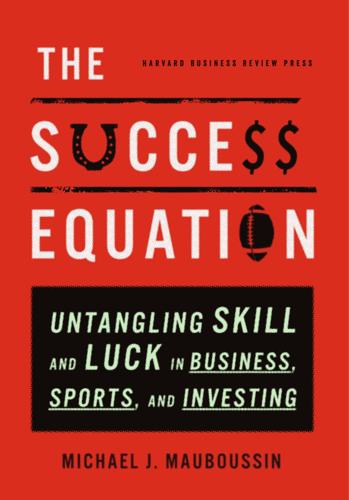
The Success Equation: Untangling Skill and Luck in Business, Sports, and Investing
by
Michael J. Mauboussin
Published 14 Jul 2012
For an excellent translation, see Robert Alter, The David Story (New York: W.W. Norton & Company, 1999). 3. Unlike the prisoner's dilemma, a well-known model in game theory, Colonel Blotto has had little impact on real-world decisions. Because cooperation is the preferred outcome from the prisoner's dilemma and there is a good understanding of how repeated interactions lead to cooperation, decision makers have been able to use the model in practical settings. For example, the prisoner's dilemma nicely describes the emergence of the “live-and-let-live” system in trench warfare during World War I. In numerous instances, both sides learned that there would be retaliation for any aggression.

Wall Street: How It Works And for Whom
by
Doug Henwood
Published 30 Aug 1998
Psychological studies have shown that economics graduate students are more likely to "free ride" — shirk contributions to an experimental "public goods" account in the pursuit of higher private returns — than the general public. Economists also are less generous than other academics in charitable giving. Undergraduate economics majors are more likely to defect in the classic prisoner's dilemma game than are other majors.^ And on other tests, students grow less honest — expressing less of a tendency, for example, to return found money — after studying economics, but not after studying a control subject like astronomy (Frank, Gilovich, and Regan 1993). This is no surprise, really.
…
The uncritical stance of most Wall Street analysts and much of the financial press reviewed in Chapter 2 makes this a bit hard to take just on the grounds of MARKET MODELS daily evidence. But even if analysts were universally honest and wise, there would still be serious communications problems between managers and stockholders. For example, according to Jeremy Stein (1989), something like a prisoners' dilemma prevails in relations between managers and the stock market. Even if participants are aware of an upward bias to earnings estimates, and even if they correct for it, managers still have an incentive to try to fool the market. If you tell the truth, your accurate estimates will be marked down by a skeptical market.
…
They seem to think that building a better model will persuade the main-streamers of the errors of their ways. 4. Of course they were asking these questions on behalf of money managers, who need advice on how to handle the trillions of dollars they "run." 5. Besides comfortable self-sufficiency, one shouldn't discount the macho feel of having dominated chaos with a complex model. 6. In a prisoners' dilemma, two experimental subjects, metaphorically partners in crime, are given the choice of betraying each other or hanging tough for monetary reward. If one defects and the other doesn't, the skunk gets 3 units. If both defect, each gets 1. If both cooperate, each gets 2. 7. One doesn't want to get too carried away naturalizing temperament and values, but the model seems particularly to drive away women and nonwhites, at least in America, because of its chilly irreality.
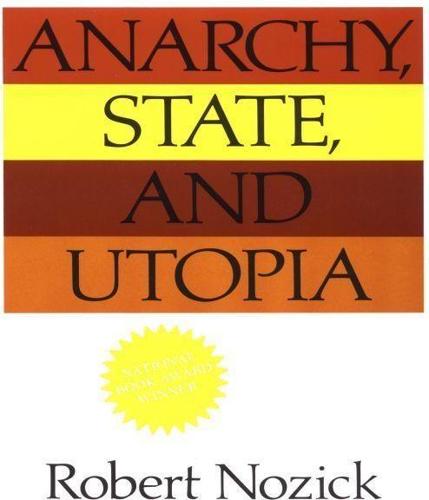
Anarchy State and Utopia
by
Robert Nozick
Published 15 Mar 1974
So in the absence of moral constraints, two rational individuals would do B and B’. If x<10, this is sufficient to yield (B, B’) by a dominance argument.2 If also x>5, (for example, 7) we have a “prisoners’ dilemma” situation in which individually rational behavior is jointly inefficient because it leads to an outcome (5, 5) which each prefers less than another (7, 7) that is available to them.3 Some have argued that a proper function of government is to prohibit people’s performing the dominant action in prisoners’ dilemma situations. However that may be, if someone in a state-of-nature situation takes upon himself this supposed function of the state (and attempts to prohibit others from performing A or B), then his action vis-à-vis others is not act C; for he is forbidding others to perform their dominant action, namely, to join a protective association.
…
To have a real chance of being successful, he must combine with others to act (performing A or B), and hence he cannot succeed in forcing everyone, including himself, away from their dominant actions A or B. MATRIX III This situation of x>5 has a theoretical interest above and beyond the usual interest of the prisoners’ dilemma. For in this situation an anarchist state of nature is jointly best of all the symmetrical situations, and it is in each individual’s interest to diverge from this joint best solution. Yet any attempt (promising success) to enforce this joint best solution itself constitutes a divergence (which causes other divergencies in self-defense) from it.
…
Elsewhere Locke recognizes this point, discussing it in the context of arbitrary acts, though it applies as well to persons acting according to fixed and publicly specified rules: “He being in a much worse condition who is exposed to the arbitrary power of one man, who has the command of 100,000, than he that is exposed to the arbitrary power of 100,000 single men” (sect. 137). 2 For a discussion of the applicability of dominance principles to some puzzling cases, see my “Newcomb’s Problem and Two Principles of Choice,” in Essays in Honor of C. G. Hempel, ed. N. Rescher et al. (Holland: Reidel, 1969), pp. 114-146; also Martin Gardner’s “Mathematical Games” column, Scientific American, July 1973, pp. 104-109, and my guest mathematical games column, Scientific American, March 1974, pp. 102-108. 3 On the “prisoners’ dilemma,” see R. D. Luce and H. Raiffa, Games and Decisions (New York: Wiley, 1957), pp. 94-102. 4 On related issues see Thomas Schelling’s essay, “The Reciprocal Fear of Surprise Attack,” The Strategy of Conflict (Cambridge, Mass.: Harvard University Press, 1960), chap. 9. 5 Since nothing is beyond the leaders of states, it would not be surprising if a nation A prohibited nation B from arming and incorporated B into A. claimed that this provided B’s citizens with protection, and thus constituted a recognition and fulfillment of A’s obligations to compensate them for the disadvantages the prohibition had imposed upon them.
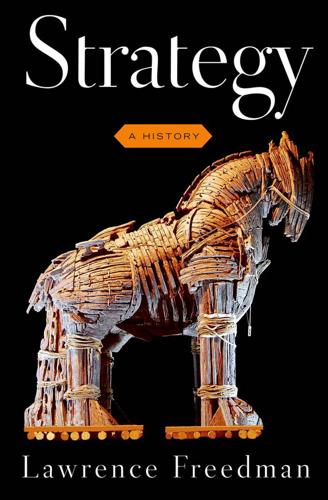
Strategy: A History
by
Lawrence Freedman
Published 31 Oct 2013
The key breakthrough came in the exploration of non-zero-sum games, in which the players could all gain or all lose, depending on how the game was played. The actual invention of the game of prisoners’ dilemma should be attributed to two RAND analysts, Merrill Flood and Melvin Dresher. The most famous formulation, however, was provided in 1950 by Albert Tucker when lecturing to psychologists at Stanford University. Prisoners’ dilemma involved two prisoners—unable to communicate with each other—whose fate depended on whether or not they confessed during interrogation and whether their answers coincided. If both remained silent, they were prosecuted on a minor charge and received light sentences (one year).
…
The misunderstanding was perhaps not unreasonable for she assumed that different qualities were required to come up with strategies: “Imagination, insight, intuition, ability to put one’s self in another person’s position, understanding of the wellsprings of human motivation—good as well as evil—these are required for the thinking up of policies or strategies.”23 For this reason, the “hardest work, so far as the social scientist is concerned, is probably already completed by the time the theory of games takes over.” In her grasp of the theory’s claim, she missed the point, though in her appreciation of the theory’s limits she was ahead of her time. The theory assumed rationality, but on the basis of preferences and values that the players brought with them to the game. Prisoners’ Dilemma The values attached to alternative outcomes of games were payoffs. The aim was to maximize them. Players were aware that in this respect they all had the same aim. In card games they accepted that their choices would be determined by the established rules of the game. As the application was extended, the choices could be shaped not only by mutually agreed upon and accepted rules but by the situation in which they found themselves.
…
The two players were left alone in separate cells to think things over. FIGURE 12.1 The figures in the corners refer to expectation of sentence. It should be noted that the matrix itself was a revolutionary way of presenting strategic outcomes and remained thereafter a fixture of formal analysis. This matrix demonstrated the prediction for prisoners’ dilemma (see fig. 12.1). They both confessed. A was unable to conspire with B and knew that if he remained silent he risked ten years’ imprisonment; if he confessed, he risked only five years. Furthermore, if B decided on the solution that would be of the greatest mutual benefit and so remained silent, A could improve his own position by confessing, in a sense double-crossing B.
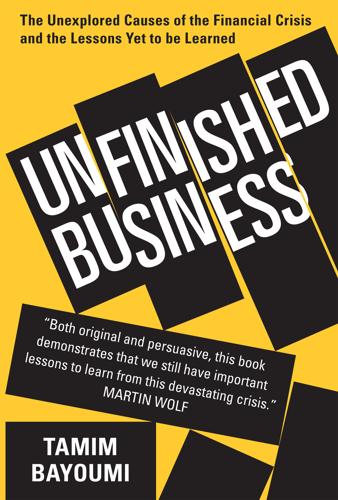
Unfinished Business
by
Tamim Bayoumi
It has had only a limited effect on economic theory, in part because it is often difficult to generalize the results. A similar comment can be made about game theory, used in economics to model how individuals interact. Important insights have been generated by game theory, the most striking of which is the “prisoners’ dilemma” in which two inmates who committed a crime are faced with the choice to confess or not confess. Unless they can communicate, each has an incentive to confess so as to minimize their sentence even though if they both deny the charge they will be set free. However, this is a simple and fairly stylized problem, and it rapidly becomes difficult to generalize how individuals will react in more complex situations.
…
(‘Lawrence of Arabia’), (i) Lehman Brothers (US investment bank) assets, (i) bankruptcy and collapse, (i), (ii), (iii), (iv), (v), (vi), (vii), (viii), (ix), (x), (xi), (xii), (xiii), (xiv), (xv) competes with other investment banks, (i) and European bank competition, (i) lightly capitalized, (i), (ii) non-participation in rescue of LTCM, (i) as regulated bank, (i) rescue, (i) Leigh-Pemberton, Robert, (i), (ii), (iii) leverage, (i), (ii), (iii), (iv), (v), (vi) Lewis, Michael: The Big Short, (i) light touch regulation, (i), (ii), (iii), (iv), (v) lira (Italian currency) Bundesbank ceases to support, (i), (ii) ejected from ERM and rejoins, (i) see also Italy Lisbon accords (2000), (i) loan-to-value ratios, (i) London ‘big bang’ (October 1986), (i) as financial center, (i) London Interbank Offering Rate (LIBOR), (i) Long Depression (1870s), (i) Long-Term Capital Management (LTCM; hedge fund), (i), (ii) Louvre Accord (1987), (i), (ii) Lucas, Robert E., (i) Luxembourg in European Coal and Steel Community, (i) and monetary union, (i) Maastricht Treaty on Economic Union (1992), (i), (ii), (iii), (iv), (v), (vi), (vii), (viii), (ix), (x), (xi), (xii), (xiii) macroeconomics and ‘Abenomics’, (i) and attitude to free markets, (i), (ii) and business cycle fluctuations, (i) and DSGE models, (i) and effect of single currency, (i) and ‘homo economicus’, (i), (ii) internal balance, (i) origin after Great Depression, (i) orthodoxy and policy challenges, (i), (ii), (iii) and policy cooperation/integration, (i), (ii) and private sector, (i) and role of central banks, (i) unsettled environment, (i) and wariness of major structural reforms, (i) Maine (US state): and interstate banking, (i) Malaysia: Asia financial crisis (i), (ii), (iii), (iv) Manufactures Hanover (US bank), (i) markets (financial) and competition, (i) differ from country to country, (i) and macroeconomic theory, (i), (ii) unpredictability, (i) see also efficient market hypothesis Merrill Lynch (US investment bank) and European competition, (i) lightly capitalized, (i), (ii) as LTCM creditor, (i) merges, (i) as regulated bank, (i) size, (i) Merriweather, John, (i) Merton, Robert, (i) Mexico: debts, (i) micro-prudential regulation and supervision, (i), (ii) misery index, (i), (ii) Mitterrand, François, (i), (ii), (iii), (iv), (v), (vi), (vii), (viii) Models Task Force, (i) ‘Monetarists’ (Euro area): differ from ‘Economists’, (i), (ii), (iii), (iv), (v), (vi) monetary policy, (i), (ii), (iii), (iv), (v) see also currency unions monetary union see European Monetary Union; single currency Monnet, Jean, (i) monopolies, (i) Morgan Grenfell (UK investment bank), (i), (ii) Morgan, John Pierpont, (i) Morgan Stanley (US investment bank) applies for bank holding company status, (i) assets, (i) becomes regulated bank, (i) and European competition, (i) lightly capitalized, (i) as LTCM creditor, (i) as shadow bank, (i) size, (i) mortgages back assets and securities, (i), (ii), (iii), (iv), (v) bundling, (i) creditworthiness and securitization, (i), (ii), (iii), (iv), (v) European investment in US, (i) market collapse, (i) residential, (i) sale of, (i), (ii) subprime, (i), (ii), (iii), (iv) in US, (i), (ii), (iii) Moynihan, Daniel, (i) Mullins, David, (i) Multilateral Development Banks (MDBs), (i) Mutual Assessment Process (MAP), (i) mutual funds, (i), (ii) mutual recognition (European Union), (i) Napoleon I (Bonaparte), Emperor of France, (i) NationsBank (US bank), (i) Natixis (French bank), (i), (ii) net asset value (NAV), (i) Net Capital Rule (US), (i), (ii) net stable funding ratio (NSFR), (i) Netherlands aims for European integration, (i) bank assets, (i) banking expansion, (i), (ii), (iii) banking system (2002), (i), (ii) close economic ties with Germany, (i) and ERM crisis, (i) in European Coal and Steel Community, (i) exports to Germany, (i) and financial crisis, (i) guilder revalued, (i) and investment banking, (i) and monetary union, (i), (ii) trade boost, (i) New Deal (US, 1930s), (i) New England (US): house prices, (i), (ii) New York city: as financial center, (i) New York (US state): interstate banking, (i) Nixon, Richard M., (i), (ii) North Atlantic crisis and Basel rules, (i) causes, (i) and currency unions, (i) and debt flows, (i) and economic models, (i) effects and consequences, (i), (ii), (iii), (iv) ends European banking boom, (i) European monetary union effect on, (i) and fall in confidence in experts, (i) financial boom and bust, (i), (ii) misery index, (i) origins (August 2007), (i), (ii), (iii) output losses, (i), (ii) responses to, (i), (ii), (iii), (iv) responsibility for, (i) and speculative ventures, (i) unpreparedness, (i), (ii), (iii) as watershed event, (i) Norway invited to join European Economic Community, (i) in Scandinavian monetary union, (i) Obama, Barack, (i) Office of the Comptroller of the Currency (OCC; US), (i), (ii), (iii) oil prices, (i), (ii) Organisation for Economic Cooperation and Development (OECD), (i) output losses, (i), (ii) volatility, (i) Outright Monetary Transaction (OMT, Euro area), (i), (ii), (iii) Padoa-Schioppa, Tommaso, (i), (ii) Parvest Dynamic ABS, (i) petrodollars, (i), (ii) Philippines, (i) physics: parallel with economic models, (i) Plaza Agreement (1985), (i), (ii), (iii) Pöhl, Karl Otto, (i), (ii), (iii) Pompidou, Georges, (i) Portugal borrowing interest rate, (i) commercial loans, (i) connected firms in, (i) in currency union periphery, (i) in Euro area, (i) European aid to, (i) excessive borrowing, (i) in Exchange Rate Mechanism, (i) expansion in bank assets, (i) financial crisis in, (i), (ii), (iii) high interest rates, (i) product market improvements, (i) reduces fiscal deficit, (i) ten-year bonds, (i) pound sterling (UK currency) Bundesbank ceases to support, (i), (ii) devalued, (i) diminishing role, (i) leaves ERM, (i) prisoners’ dilemma, (i) public sector borrowers, (i) quantitative easing, (i) quantum mechanics, parallels to economics, (i), (ii) Quantitative Impact Studies (QISs), (i) Rajan, Raghuram, (i) random walk theory, (i) rational expectations, (i) Reagan, Ronald, (i), (ii), (iii), (iv) Regulation Q see United States of America Reigal Neal Interstate Branching Efficiency Act (US, 1997), (i) renmimbi (Chinese currency): depreciation against dollar (1994), (i) repurchase agreements (repos) broker-dealers exploit, (i) collateral, (i), (ii), (iii), (iv) expansion, (i) and foreign borrowing, (i) freeze, (i) fund housing bubble, (i) liquidity, (i) market shrinks in US, (i) as source of investment bank funding, (i) Ricardian equivalence, (i) Ricardian offset, (i) risk models, (i), (ii), (iii), (iv), (v), (vi), (vii), (viii), (ix), (x), (xi), (xii), (xiii), (xiv), (xv) risk-weighted assets, (i), (ii), (iii) Rochard, Michel, (i) Rome, Treaty of (1957), (i), (ii), (iii), (iv), (v), (vi) Roosevelt, Franklin D., (i) Roubini, Nouriel, (i) Royal Bank of Scotland (RBS; UK bank), (i) Russia exchange rate collapse (1998), (i) joins WTO, (i) safe haven bankruptcy protection (US), (i) Sanio, Jochen, (i) Santander (Spanish bank) assets expanded, (i) capitalization, (i) international scope, (i) as mega-bank, (i) takeovers, (i) Sants, Hector, (i) Savings and Loans (US), (i), (ii) Scandinavia: monetary union, (i) Schmidt, Helmut, (i), (ii), (iii) Schoales, Myron, (i) Securities and Exchange Commission (SEC; US) and mortgage-backed securities, (i) registers hedge funds, (i) and regulation, (i), (ii), (iii), (iv) Release 47683 widens repurchase agreement collateral, (i) and repo market, (i), (ii), (iii), (iv) securitization and mortgages, (i), (ii), (iii), (iv), (v), (vi) private label, (i) in US, (i), (ii), (iii), (iv), (v), (vi) Security Pacific Corporation (US bank), (i) shadow banks see United States of America share prices: fluctuations and predictions, (i), (ii) Shiller, Robert, (i), (ii), (iii) Silva-Herzog, Jesus, (i) silver: in US money supply, (i) single currency benefits, (i) effect on trade, (i) and macroeconomic shocks, (i) see also Euro area Single European Act (1986), (i), (ii), (iii), (iv), (v) Smith, Adam, (i), (ii) Smithsonian Agreement, (i), (ii) snake currency arrangement (Europe), (i), (ii) Société Générale (French bank): expansion, (i), (ii), (iii) South Korea, (i), (ii), (iii), (iv) Spain borrowing interest rate, (i) caja savings banks, (i) commercial loans, (i) in currency union periphery, (i) ejected from Exchange Rate Mechanism, (i) excessive borrowing, (i) in Exchange Rate Mechanism, (i) expansion in bank assets, (i) and ESM funding to restructure banking system, (i) financial crisis in, (i), (ii), (iii) high interest rates, (i) housing, (i), (ii) included in Euro area, (i) local governments in, (i) reduces fiscal deficit, (i) successful effect of reforms, (i) ten-year bonds, (i) Stability and Growth Pact (SGP, Euro area), (i), (ii), (iii), (iv), (v) Strasbourg summit (of European leaders, 1990), (i), (ii) Strauss-Kahn, Dominique, (i) stressed value-at-risk models (SVARs), (i) Suez (French bank), (i) supply and demand, law of, (i) Sweden in Basel Committee, (i) and currency fluctuations, (i) in Scandinavian monetary union, (i) Switzerland in financial crisis, (i) trade with EMU members, (i) taxes cuts, (i), (ii), (iii), (iv) favor debt over equity, (i) kept low, (i) little effect on private spending, (i) TCW (US bank), (i) Texas: house prices fall, (i) Thailand, (i), (ii), (iii), (iv) Thatcher, Margaret, (i), (ii), (iii), (iv), (v), (vi) trade: affected by single currency, (i) trade balance, (i) Travelers Group (US financial institution), (i) Trichet, Jean-Claude, (i) Trump, Donald elected President, (i) and fiscal stimulus, (i) looser view on bank regulation, (i) proposes tax cuts, (i) UBS (Swiss bank), (i) UniCredit (Italian bank), (i), (ii), (iii) United Kingdom (Britain) bank assets reduced since 2008, (i) banking expansion, (i), (ii) banking system, (i) bond markets, (i) central bank independence, (i) common capital standard agreed with US, (i) core Euro banks expand into, (i) and currency fluctuations, (i) favors larger bank capital buffers, (i) favours EU-wide bank regulator, (i) financial crisis (1866), (i) foreign banks in, (i) foreign investments in, (i) high inflation, (i), (ii) invited to join European Economic Community, (i) joins Exchange Rate Mechanism, (i) large outflows, (i) leaves European Union, (i) leaves Exchange Rate Mechanism, (i), (ii) ‘light touch’ regulation, (i), (ii), (iii), (iv), (v) in North Atlantic financial crisis (2008), (i) opts out of Maastricht Treaty, (i) owns US assets, (i), (ii) product market, (i) rebate from EEC budget, (i) resists monetary union, (i), (ii) scale of banking, (i) separated commercial and investment (merchant) banks, (i) trade with EMU members, (i) see also pound sterling United States of America accepts Basel 3 framework for large banks, (i) accounting practices, (i) adopts new leverage ratio, (i) aggregate spending, (i) anchor regions and peripheries in currency union, (i) and Asian crisis, (i) assets held by European banks, (i), (ii) bank assets reduced since 2008, (i) bank deposits migrate, (i) bank failures and prompt corrective action, (i) bank mergers, (i) bank size compared with Europe, (i) bankers’ morality, (i) banking expansion, (i) banking regulation, (i), (ii), (iii), (iv), (v), (vi), (vii) and Basel 2 accord, (i) in Basel Committee, (i) bond markets, (i) bond yields fall, (i) business cycles, (i) champions internal risk models, (i) common capital standard agreed with UK, (i) consumer price index, (i) core Euro banks expand into, (i) as crisis country, (i) currency as international standard, (i) currency union in, (i), (ii), (iii) debt outflows, (i) deregulation, (i), (ii) devaluation, (i) effect of break-up of Bretton Woods on, (i) effect of post-crisis changes, (i), (ii) Euro area lends to, (i), (ii) European universal banks in, (i), (ii) favors larger bank capital buffers, (i) federal support for banks, (i) federal tax system, (i) financial boom, (i), (ii) financial reform in, (i), (ii) financial system (2002), (i), (ii) floating exchange rates, (i) Flow of Funds data, (i), (ii) fractured banking system, (i) and gold market, (i) high tech boom collapses, (i) house prices, (i), (ii), (iii), (iv), (v), (vi), (vii), (viii), (ix), (x), (xi), (xii), (xiii), (xiv), (xv) imposes surcharge on foreign imports, (i) improved monetary policy, (i) inflation fluctuates, (i), (ii), (iii), (iv), (v), (vi) integrated banking system, (i) interest rates limited, (i), (ii), (iii) investment bank expansion, (i), (ii) investment bank regulation, (i), (ii), (iii) labor market flexibility, (i) and Latin American debt crisis, (i), (ii) misery index, (i) modest recovery from crisis, (i) national (interstate) banks, (i), (ii), (iii), (iv) national price movements, (i) and oil prices, (i) output volatility, (i) policy coordination fades, (i) post 2002 financial boom, (i) product market, (i) recessions (1985–2005), (i) regulation of shadow banks, (i) and repo market, (i) response to crisis, (i) responsibility for macroprudential policies, (i) and risk measures, (i), (ii) securitization, (i), (ii) separates commercial and investment banking, (i), (ii), (iii) shadow banks develop, (i), (ii), (iii), (iv), (v), (vi), (vii), (viii), (ix), (x) and small bank regulation, (i) trade balance, (i), (ii) trade with EMU members, (i) unprepared for financial crisis, (i) United States Federal Reserve Bank belief in market discipline of investment banks, (i), (ii), (iii), (iv), (v) and business cycle, (i) conducts stress tests, (i) cooperation of monetary and fiscal policy, (i) eases rates, (i), (ii) easy financing conditions, (i) emergency funding, (i), (ii) faith in investors’ judgment, (i) helps stabilize markets, (i) and house price boom, (i) and inflation rates, (i) monetary policy, (i) as proposed model for European Central Bank, (i) provides safety net, (i), (ii) regulates mortgage lending standards, (i) and regulation of investment banks, (i), (ii) Regulation Q, (i) regulatory function and practice, (i), (ii), (iii), (iv) response to crisis, (i) and risk models, (i), (ii), (iii) and tax cuts, (i) urges reform of Basel (i), (ii) warns about loans to Latin America, (i) value-at-risk models (VARs), (i) Venezuela, (i) Versailles Treaty (1919), (i) Vietnam War, (i) Volcker, Paul, (i), (ii) rule, (i) Wachovia Corporation (US bank), (i) Wall Street: reform, (i) waterfall investment structures, (i) welfare payments, (i) Wells Fargo (US bank), (i), (ii) Werner Commission Report (Europe) (1970), (i), (ii), (iii) West Germany economic growth, (i) in European Coal and Steel Community, (i) see also Germany White, Bill, (i) White, Harry Dexter, (i) won (S.
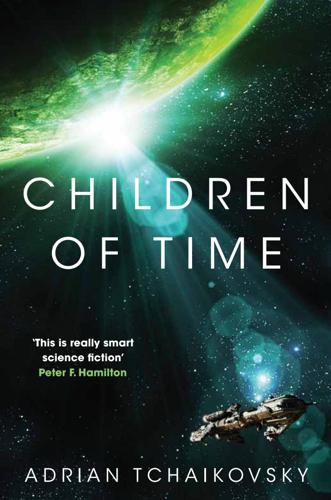
Children of Time
by
Adrian Tchaikovsky
Published 31 May 2015
Faced with the arrival of humanity, the creator-species, the giants of legend, the spiders’ thought was not How can we destroy them? but How can we trap them? How can we use them? What is the barrier between us that makes them want to destroy us? The spiders have equivalents of the Prisoners’ Dilemma, but they think in terms of intricate interconnectivity, of a world not just of sight but of constant vibration and scent. The idea of two prisoners incapable of communication would not be an acceptable status quo for them, but a problem to overcome: the Prisoners’ Dilemma as a Gordian knot, to be cut through rather than be bound by. They have long known that, within their own bodies and in other species across their planet, there is a message.
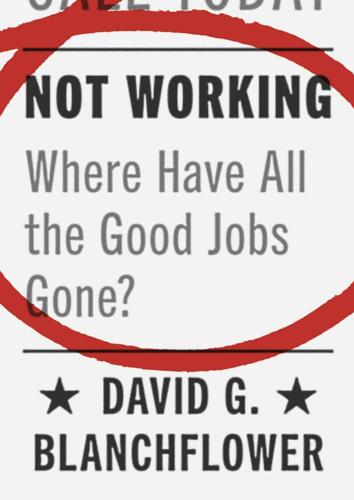
Not Working: Where Have All the Good Jobs Gone?
by
David G. Blanchflower
Published 12 Apr 2021
Ashenfelter concludes that there is considerable potential for producing high-quality pinot noir wines in the Czech Republic. Nice. Ashenfelter also has written about the art market, the value of life, hospital mergers, and McWages, to name but a few other data-driven projects. He has published on how to not lie with statistics, as well as on lawyers as agents of the devil in a Prisoner Dilemma game and pendulum arbitration. He also examined the behavior of identical twins using data from the Twins Days Festival at Twinsburg, Ohio. Looking at the data is an honorable estate. Others walk about too. Phew. Another study that looks at the data is David Card’s famous article on the effect of the Mariel Boatlift of 1980 on the Miami labor market (1990).
…
See also flexible work schedules; gig economy; self-employment part-time for economic reasons (PTFER) cohort, 118, 126, 129–32 part-timers who want full-time jobs (PTWFT), 118, 128, 129, 131–32 Patterson, Tom, 287 Paul, Karsten I., 43 Paulson, Henry, 163 Pecket, Elliott, 186–87 Peek, Liz, 16 Pencavel, John, 122, 123 Pennsylvania, 24, 236, 265, 288, 289 Pennycook, Matthew, 104 pensions, 32, 57, 62, 281, 338–39 Peri, Giovanni, 248–49 Personal Consumption Expenditures (PCE), 72 Peskowitz, Zachary, 326 Peters, William, 213 Phelps, Ned, 302–3 Phillips, William, 308, 309 Phillips curve, 208, 305, 307–11 Phone 4U, 335 Pickard, James, 272 Pidd, Helen, 273 Piketty, Thomas, 108, 109, 165, 337 Pinto, Sergio, 220 plastic surgery, 184 Poland, 81, 136; emigration from, 86, 93, 131, 251–54; Great Recession in, 79; underemployment in, 132; unemployment in, 134; wage growth in, 61 political correctness, 284, 324 Portes, Jonathan, 255, 342 Portugal, 38, 77, 78, 229; business and consumer confidence in, 196, 321; declining trust in, 321, 331; immigration to, 238; underemployment in, 136; unemployment in, 41, 132, 134 Posen, Adam, 70 Pouliakis, Konstantinos, 140 Powell, Jerome, 67–68, 304–5, 316 Pozuelo, Julia Ruiz, 226 Praet, Peter, 207 Pratt, Laura A., 224 Precis (clothing retailer), 209 Present Situation Index, 210 Pressman, Sarah D., 220 Prezzo (restaurant chain), 209 Prisoner Dilemma, 190 productivity, 63, 166–67; in housing-constrained cities, 91–92; immigration linked to, 255, 256; wage growth linked to, 64–65, 69, 84, 120, 121, 191, 302 progressive taxation, 342 protectionism, 114, 285 Protective Labor Market Institutions (PLMIs), 86 public schools, 72 Pulliam, Christopher, 74 Purchasing Manager Indices (PMIs), 194, 196, 205, 206 Putin, Vladimir, 293 Putnam, Robert, 329, 334 quantitative easing, 4, 62, 160, 162, 339 Quévat, Benjamin, 58 Quinones, Sam, 217 Rachman, Gideon, 282 Rapley, John, 165, 181, 193 Real Clear Politics (RCP), 321 recessions, 7, 191, 209 Rees, Daniel I., 36 Rees-Mogg, Jacob, 321 refugees, 7, 238, 241, 247, 250, 281, 325 Reinhart, Carmen, 3, 175 Reis, Ricardo, 178 rental housing, 34–35 rent controls, 85 replacement rate, 86 retirement age, 100, 278, 282–83, 339, 345, 346 return migration, 252 Rexnord Corporation, 290 Richards, Lindsay, 340 Rieder, Travis, 217 Rinne, Ulf, 57 Rivington Biscuits, 187 The Road to Wigan Pier (Orwell), 46, 270 Roberts, Russ, 169 Robinson, Eugene, 325 Rogoff, Kenneth, 3, 175 Romania, 93, 131, 251 Romney, Mitt, 24, 267, 268, 292 Rosen, Sherwin, 123 Rosengren, Eric, 153 Roth, Christopher, 340–41 Roubini, Nouriel, 152 Royal Bank of Scotland (RBS), 160, 162, 188, 335 RSA Insurance, 188 Rugaber, Christopher, 320 rules of thumb, 8 Russia, 281, 293, 330 Ryan, Richard W., 102 Ryanair, 188 Ryssdal, Kai, 67 S&P, 188 Sabadish, Natalie, 109 Sacerdote, Bruce, 71–72 Saez, Emmanuel, 108, 109–10, 337 Salvini, Matteo, 282 Sánchez, Aida Caldera, 92 Sanders, Bernie, 115, 343 Santander, 159, 281 Sarkozy, Nicolas, 344 Saunders, Michael, 100 savings, 75 Sawhill, Isabel V., 74 Schlagenhauf, Don, 74 Schwarz, Moises, 154 Seager, Ashley, 153–54 seasonal employment, 56 self-employment, 141; in Netherlands, 62, 364n26; primary vs. secondary, 140; in United Kingdom, 62, 83, 103–4, 140.

Whiplash: How to Survive Our Faster Future
by
Joi Ito
and
Jeff Howe
Published 6 Dec 2016
The most advantageous choice is for both participants to remain silent, but the most common choice is to confess—neither player wants to take the chance that the other will confess and send him or her to prison. Variations of the prisoner’s dilemma are often used to explore questions of economics and morality. “Prisoner’s Dilemma,” Stanford Encyclopedia of Philosophy, revised August 29, 2014, http://plato.stanford.edu/entries/prisoner-dilemma/. 20 Austin Hill, “On Your Permanent Record: Anonymity, Pseudonymity, Ephemerality & Bears Omfg!,” Medium, March 17, 2014, https://medium.com/@austinhill/on-your-permanent-record-f5ab81f9f654#.ak8ith7gu. 21 Felix Martin, Money: The Unauthorized Biography (New York: Knopf Doubleday Publishing Group, 2015). 22 Ibid., 43. 23 Ibid., 55–60. 24 Simon Singh, The Code Book: The Science of Secrecy from Ancient Egypt to Quantum Cryptography (New York: Knopf Doubleday Publishing Group, 2011).
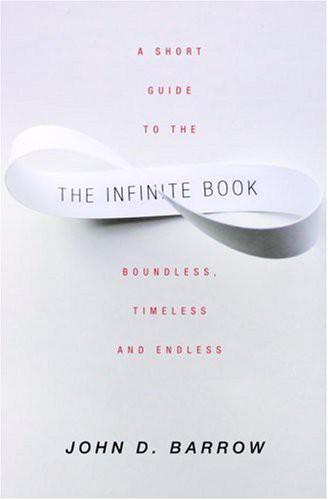
The Infinite Book: A Short Guide to the Boundless, Timeless and Endless
by
John D. Barrow
Published 1 Aug 2005
The same conclusions would hold for uncountable infinites as well. 22. C.S. Lewis, Out of the Silent Planet (1938), Perclandra (1943), That Hideous Strength (1945). 23. We know that certain basic altruistic actions are optimal strategies for individuals playing evolutionary ‘games’ with others. This leads to cooperation of the Prisoners’ Dilemma variety and behaviour, in which an ‘I’ll scratch your back if you’ll scratch mine’ philosophy is the best in the sense that any deviation from it by any player sees them worse off. However, it is interesting that human altruistic behaviour, especially that to which many people aspire and even more people admire, goes far beyond this minimal tit-for-tat altruism that arises for selfish reasons.

Our Final Invention: Artificial Intelligence and the End of the Human Era
by
James Barrat
Published 30 Sep 2013
On the stick side, fear-mongering is a reliable social engineering tactic—what if at this moment your enemies are training ASI against you? In a real-world situation this might work—but what about an invented situation, like the AI-Box Experiment? When I asked Yudkowsky about his methods he laughed, because everyone anticipates a diabolically clever solution to the AI-Box Experiment—some logical sleight of hand, prisoner-dilemma tactics, maybe something disturbing. But that’s not what happened. “I did it the hard way,” he said. Those three successful times, Yudkowsky told me, he simply wheedled, cajoled, and harangued. The Gatekeepers let him out, then paid up. And the two times he lost he had also begged. Afterward he didn’t like how it made him feel.
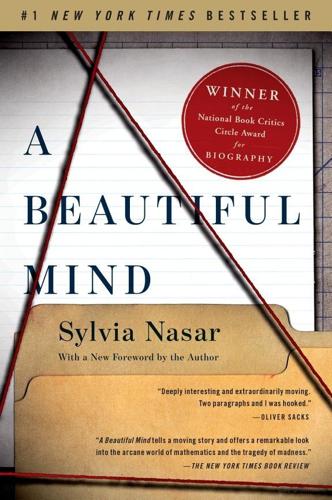
A Beautiful Mind
by
Sylvia Nasar
Published 11 Jun 1998
Plenary lecture, World Congress of Psychiatry, Madrid, 8.26.96 (unpublished). Nicholi, Armand M., Jr. The New Harvard Guide to Psychiatry. Cambridge: The Belknap Press of Harvard University, 1988. “Norbert Wiener 1894–1964.” Bulletin of the American Mathematical Society, vol. 72, no. 1, part ii (1964). Poundstone, William. Prisoners’ Dilemma. New York: Doubleday, 1992. Regis, Ed. Who Got Einstein’s Office? Reading, Mass.: Addison-Wesley, 1987. Reid, Constance. Courant in Gottingen and New York. New York: Springer Verlag, 1976. Rota, Gian-Carlo. Indiscrete Thoughts. Boston: Birkhauser, 1997. Sass, Louis A. Madness and Modernism.
…
history of, 49 as mathematics capital, 50–51 Princeton University, 45 description of, 50 dinner at, 61–62 graduate housing at, 61–62 history of, 51 student life at, 61–62 Princeton University mathematics department games played at, 75–78 girls absent from, 62 grades as fiction at, 60 Nash offered one-year post at, 309–10, 311, 312 Nash’s fellowship to, 46 Nash’s graduate work at, 45–47, 49, 58–98 philosophy of education at, 60–61 rise of, 52–57, 58 students of, 64–65 teatime at, 63, 67 Principia (Newton), 85 Prisoner’s Dilemma, 118–19, 150 Prisoners Dilemma (Poundstone), 76 Private Terror/Public Places (Glass), 335 “Problème de Cauchy Pour les Equations Differentielles d’une Fluide Générale, Le” (Nash), 297 Prospect High School, 192 William Lowell Putnam Mathematics Competition, 43–44, 72, 144 Pythagoras, 94 Pythagoras’ Trousers (Wertheim), 334 quantum theory, 45, 70, 81, 138, 202, 220–221, 222–23, 236 Queen Mary, 265, 269, 282, 311–12 Rademacher, Hans, 246 Radio Corporation of America (RCA), 283, 341 Raiffa, Howard, 122 Ramanujan, Srinivasa, 12, 45, 60–61 RAND Corporation, 72, 100, 103, 104–23, 124, 147–51, 321, 363 description of, 105–7, 111–12 game theory and, 104–5, 108, 111, 115–122, 149–51 location of, 108 Nash’s dismissal from, 184–89 Nobel deliberations and, 366 practical jokes at, 111 “RAND Hymn, The” (Reynolds), 104 Randol, Burton, 286 Rappaport, Anatole, 303 rational conflict and cooperation, theory of, 13 Raymond, Sister, 193–94 RCA (Radio Corporation of America), 283, 341 Reboul, Mark, 332 Red Cross, 191 Reed-Solomon code, 144 Reidemeister group, 69 relativity, 45, 56 general theory of, 52, 70, 86, 380 special theory of, 51–52, 70, 86, 231 Reynolds, Donald V., 36, 37 Reynolds, Malvina, 104 Ricardo, David, 88 Richardson, Gillian, 297 Rider College, 345, 351 Riemann, Georg Friedrich Bernhard, 12, 129, 157, 230 Riemann Hypothesis, 19, 20, 138, 229–32, 236, 238, 241, 243, 277 Nash’s presentations on, 245–46, 251 Riemannian manifolds, embedding of, 155–63, 203, 204, 218, 219, 345 Rigby, Fred D., 125, 126 Risperadol, 384 Roberts, John, 376, 377 Robinson, Julia, 38 Rockefeller, Nelson, 336 Rockefeller Foundation, 53, 84 Rogers, Adrienne, 223 Rogers, Hartley, 76, 223, 241 Roosevelt, Franklin D., 56 Rose, Wickliffe, 53 Rosenberg, Ethel, 110, 185 Rosenberg, Julius, 110, 185 Rota, Gian-Carlo, 59, 162, 220, 223, 236 Nash’s McLean commitment and, 257 and onset of Nash’s schizophrenia, 241, 251 Rota, Terry, 223 Roth, Al, 150, 362 Roth, Klaus F., 226 Rothschild, Michael, 374 Rousseau, Jean-Jacques, 273 Royal Swedish Academy of Arts and Letters, 357 Royal Swedish Academy of Sciences, 356–373 secrecy of, 357 see also Nobel Prize in economics Rubinstein, Ariel, 354–55, 360, 362 Rudolf, Archduke, 191 Russell, Bertrand, 14, 35, 118 Russell, Henry Norris, 51 Russell, Lindsay, 172 Rutgers University, 346 Sabin, Betty, 195 SAC (Strategic Air Command), 121 Sacco, Nicola, 261 Sackel, Manfred, 293 St.

More Joel on Software
by
Joel Spolsky
Published 25 Jun 2008
The rationale behind this is that if you freeze, they’ll pick you off one at a time until you’re all dead, but if you charge, only some of you will die by running over mines, so for the greater good, that’s what you have to do. The trouble is that no rational soldier would charge under such circumstances. Each individual soldier has an enormous incentive to cheat: freeze in place and let the other, more macho, soldiers do the charging. It’s sort of like a Prisoners’ Dilemma. In life or death situations, the military needs to make sure that they can shout orders and soldiers will obey them even if the orders are suicidal. That means soldiers need to be programmed to be obedient in a way that is not really all that important for, say, a software company. In other words, the military uses Command and Control because it’s the only way to get 18-year-olds to charge through a minefield, not because they think it’s the best management method for every situation. 40 More from Joel on Software In particular, in software development teams where good developers can work anywhere they want, playing soldier is going to get pretty tedious, and you’re not really going to keep anyone on your team.

The Rationalist's Guide to the Galaxy: Superintelligent AI and the Geeks Who Are Trying to Save Humanity's Future
by
Tom Chivers
Published 12 Jun 2019
‘It was the mutual fears of these two defensive alliances, and the general insecurity created by the erratic character of the imperialistic utterances of William II, that inspired the diplomatic manoeuvres during the two decades before the First World War,’4 writes the historian Hans Morgenthau. This is a classic game-theory problem, known as the stag-hunt game, and related to the famous prisoners’ dilemma. It’s also known as the Hobbesian trap, after Thomas Hobbes, who said that greed, glory and fear are the three principal causes of war.5 You can model it with simple numbers. You’ve got two players, each with two options: either behave aggressively or behave peacefully. If you both behave peacefully, you have peace.

On the Edge: The Art of Risking Everything
by
Nate Silver
Published 12 Aug 2024
GO TO NOTE REFERENCE IN TEXT prisoner’s dilemma, first described in 1950: “Prisoner’s Dilemma,” ScienceDirect, sciencedirect.com/topics/social-sciences/prisoners-dilemma. GO TO NOTE REFERENCE IN TEXT siblings, Isabella and Wyatt Blackwood: I chose these names from a set of ChatGPT suggestions for villainous-sounding names; they are not meant to allude to any specific people. GO TO NOTE REFERENCE IN TEXT as a paradox: The Investopedia Team, Charles Potters, and Pete Rathburn, “What Is the Prisoner’s Dilemma and How Does It Work?,” Investopedia, March 31, 2023, investopedia.com/terms/p/prisoners-dilemma.asp. GO TO NOTE REFERENCE IN TEXT human beings cooperate: Leonie Heuer and Andreas Orland, “Cooperation in the Prisoner’s Dilemma: An Experimental Comparison Between Pure and Mixed Strategies,” Royal Society Open Science 6, no. 7 (July 2019): 182142, doi.org/10.1098/rsos.182142.
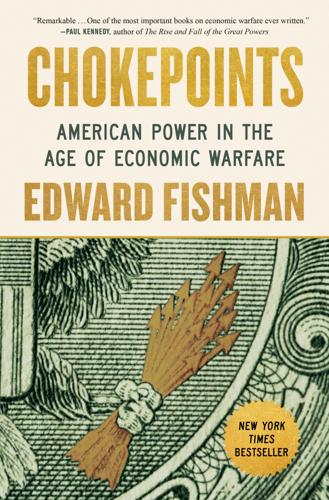
Chokepoints: American Power in the Age of Economic Warfare
by
Edward Fishman
Published 25 Feb 2025
GO TO NOTE REFERENCE IN TEXT a third of its oil and gas imports: “European Energy Security Strategy,” European Commission, COM(2014) 330 final, May 28, 2014, eur-lex.europa.eu/legal-content/EN/TXT/PDF/?uri=CELEX:52014DC0330&from=EN. GO TO NOTE REFERENCE IN TEXT “The poor schmo”: Michael Crowley, “Prisoners Dilemma,” The New Republic, June 17, 2009, newrepublic.com/article/64253/prisoners-dilemma. GO TO NOTE REFERENCE IN TEXT almost seventy detainees: Michelle Shephard, “Gitmo’s Fallen Czar,” Foreign Policy, May 23, 2013, foreignpolicy.com/2013/05/23/gitmos-fallen-czar. GO TO NOTE REFERENCE IN TEXT “a Soviet hand”: Author interview with Dan Fried, 2022.

Free culture: how big media uses technology and the law to lock down culture and control creativity
by
Lawrence Lessig
Published 15 Nov 2004
"[T]here might be a collective economic rationality that would lead manga and anime artists to forgo bringing legal actions for infringement. One hypothesis is that all manga artists may be better off collectively if they set aside their individual self-interest and decide not to press their legal rights. This is essentially a prisoner's dilemma solved." [25] The term intellectual property is of relatively recent origin. See Siva Vaidhyanathan, Copyrights and Copywrongs, 11 (New York: New York University Press, 2001). See also Lawrence Lessig, The Future of Ideas (New York: Random House, 2001), 293 n. 26. The term accurately describes a set of "property" rights—copyright, patents, trademark, and trade-secret—but the nature of those rights is very different
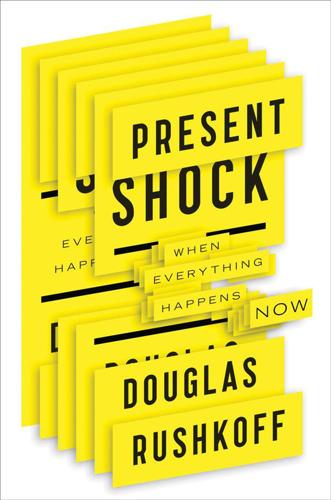
Present Shock: When Everything Happens Now
by
Douglas Rushkoff
Published 21 Mar 2013
An incarcerated person is the most literal example of one living within a closed environment. These are individuals without access to information and incapable of exercising basic freedoms. All feedback and iteration are removed, other than that between the prisoner and his keepers. With the benefit of several hundred prisoner dilemma studies to mine for data and differences, Méro found that the more the “prisoners” knew about their circumstances and those of their fellow prisoners, the less selfishly they behaved. Communication between prisoners invariably yielded more cooperation. Isolation bred paranoia, as did more opacity about how the rules worked.

Public Places, Urban Spaces: The Dimensions of Urban Design
by
Matthew Carmona
,
Tim Heath
,
Steve Tiesdell
and
Taner Oc
Published 15 Feb 2010
Market Failure and Imperfection To work efficiently, markets require ‘perfect’ competition, which, in turn, requires the following conditions: a large number of buyers and sellers; the quantity of any good bought by a buyer or sold by a seller being small relative to the total quantity traded; the goods or services sold by different sellers being identical; all buyers and sellers having perfect information; and perfect freedom of entry to the market. In practice, markets do not work perfectly and often ‘fail’ or are ‘imperfect’ in some way. As well as problems of prisoners’ dilemma conditions (individual actions that result in sub-optimal collective outcomes) and common pool goods (goods to which common property rights exist), three kinds of market failure/imperfection are of especial importance to urban designers:(i) Externalities Externalities are spill-over effects – that is, effects not taken into account in the process of the voluntary market exchange and thus external to the price paid.
…
Similar to chess – in which ‘the meaning of a move is dependent on the location of the other pieces and on the characteristics of the piece’ – it requires ‘… that individual products be designed to engage their built and natural contexts in order to deftly create larger forms.’ (2009: 135, 138). Civic concinnity attempts to address a collective action problem in which individual, independent and beneficial actions can produce a cumulative outcome that is detrimental to all (i.e. a version of the prisoners, dilemma, but also relating to the tragedy-of-the-commons, where individuals have no incentive to consider the impact of their action on the whole). Childs (2009: 140), for example, acknowledges the inevitability of tensions between the ‘civic view’ and the ‘building view’: ‘Meadows and other ecosystems are not composed solely of happy symbiotic relationships.

You've Been Played: How Corporations, Governments, and Schools Use Games to Control Us All
by
Adrian Hon
Published 14 Sep 2022
Sonia Fizek and Anne Dippel, “Gamification of Terror: Power Games as Liminal Spaces,” Proceedings of DiGRA 2020, accessed November 28, 2021, www.digra.org/wp-content/uploads/digital-library/DiGRA_2020_paper_77.pdf. 16. “The Cold War and Prisoner’s Dilemma,” Networks: Course Blog for INFo 2040/CS 2850/Econ 2040/SOC 2090, Cornell University, September 14, 2015, https://blogs.cornelledu/info2040/2015/09/14/the-cold-war-and-prisoners-dilemma. 17. “Wikipedia: Wikipedia is an MMORPG,” Wikipedia, updated September 15, 2021, https://en.wikipedia.org/wiki/Wikipedia:Wikipedia_is_an_MMORPG. 18. Ian Sample, “Blow to 10,000-Hour Rule as Study Finds Practice Doesn’t Always Make Perfect,” Guardian, August 21, 2019, www.theguardian.com/science/2019/aug/21/practice-does-not-always-make-perfect-violinists-10000-hour-rule. 19.
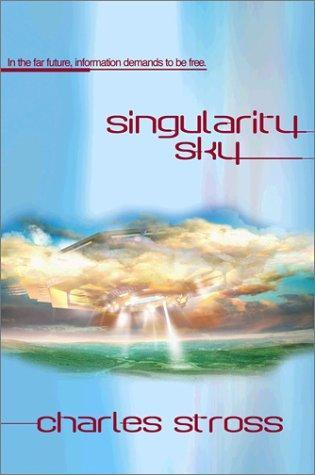
Singularity Sky
by
Stross, Charles
Published 28 Oct 2003
Quote, the viability of a postsingularity economy of scarcity is indicated by the transition from an indirection-layer-based economy using markers of exchange of goods and services to a tree-structured economy characterized by optimal allocation of productivity systems in accordance with iterated tit-for-tat prisoner's dilemma. Money is a symptom of poverty and inefficiency. Unquote, the Marxist-Gilderist manifesto. Chapter two. Why you not performing?" "Because most of our people aren't ready for that," Burya said bluntly. A tension in his back began to relax; if this monstrous Critic wanted to debate revolutionary dialectic, well of course he could oblige!
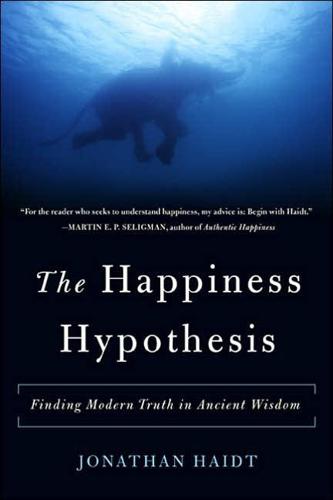
The Happiness Hypothesis: Finding Modern Truth in Ancient Wisdom
by
Jonathan Haidt
Published 26 Dec 2005
Lakin and Chartrand, 2 0 0 3 . 29. van Baaren et al., 2004. 30. van Baaren et al., 2003. C H A P T E R 4 1. Dhatnma-pada, verse 252, in Mascaro, 1973. 2. "Outing Mr. Schrock," Washington Post, September 2, 2 0 0 4 , A 2 2 . 3. Horn and Haidt, in preparation. 4. For extensive discussions of the prisoner's dilemma game, s e e Axelrocj, ll>84; Wright, 1994. 5. M a c h i a v e l l i , 'live Discourses, 1 . 2 5 . 6. Byrne and Whiten, 1988. 7. Batson et al., 1997; Batson et al., 1999. 8. Buchanan, 1965, 53. 9. Pachocinski, 1996, 222. 10. Wright, 1994, 13. I 1. Kuhn, 1991. - , 12. Perkins, Farady, and Bushey, 1991. 13.

Glasshouse
by
Charles Stross
Published 14 Jun 2006
But it turns out that in addition to our points being averaged within the cohort, each cohort in the parish gets to talk about what they've achieved in the preceding week, and the other cohorts rate them on their behavior before voting to add or subtract bonus points." "It's an iterated prisoner's dilemma scenario, with collective liability," Angel cuts in, just as one of the operator zombies twiddles a knob on a polished metal tank behind the bar that makes a noise like a pressure leak. "Very elegant experimental design, if you ask me." "It's an—" Oh shit. I nod, guardedly, unsure how much I can reveal: "I think I see."
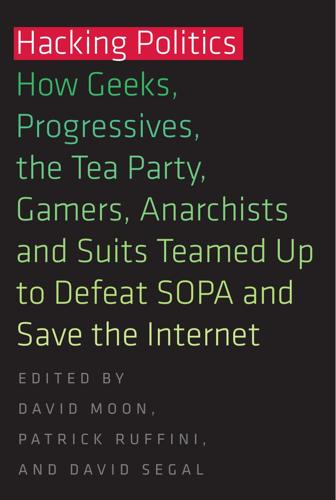
Hacking Politics: How Geeks, Progressives, the Tea Party, Gamers, Anarchists and Suits Teamed Up to Defeat SOPA and Save the Internet
by
David Moon
,
Patrick Ruffini
,
David Segal
,
Aaron Swartz
,
Lawrence Lessig
,
Cory Doctorow
,
Zoe Lofgren
,
Jamie Laurie
,
Ron Paul
,
Mike Masnick
,
Kim Dotcom
,
Tiffiniy Cheng
,
Alexis Ohanian
,
Nicole Powers
and
Josh Levy
Published 30 Apr 2013
Two illustrations that I hope might appeal to my data-driven friends in Silicon Valley and Alley follow. First of all: there’s an essential game theory problem that helps sustain the decrepit state of our economy—it can be illuminated by that most canonical game theory thought experiment, in fact: in the Prisoners’ Dilemma, two partners in crime are hauled into jail and separated for questioning. If one snitches and the other doesn’t, the rat walks and the one who stays quiet goes to jail for ten years; if each gives up the other, they both go to jail for three years; if neither talks, they both go free. In the Prisoner’s Dilemma the rational decision, yielding the best-expected outcome for each criminal, has the pair ratting one another out, and taking the middling sentences.
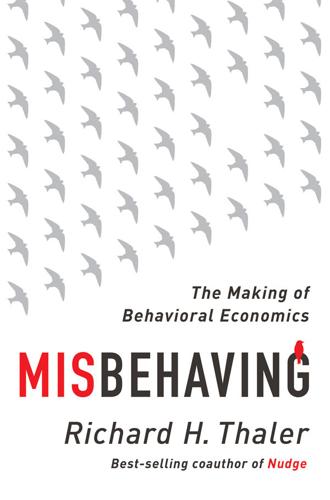
Misbehaving: The Making of Behavioral Economics
by
Richard H. Thaler
Published 10 May 2015
Hoffman, Moshe, Sigrid Suetens, Martin A. Nowak, and Uri Gneezy. 2012. “An Experimental Test of Nash Equilibrium versus Evolutionary Stability.” In Proc. Fourth World Congress of the Game Theory Society (Istanbul, Turkey), session 145, paper 1. Hofstadter, Douglas R. 1983. “Computer Tournaments of the Prisoners-Dilemma Suggest How Cooperation Evolves.” Scientific American 248, no. 5: 16. Hogarth, Robin M., and Melvin W. Reder, eds. 1986. “The Behavioral Foundations of Economic Theory: Proceedings of a Conference October 13–15, 1985.” Journal of Business 59, no. 4, part 2 (October): S181–505. ———, eds. 1987.
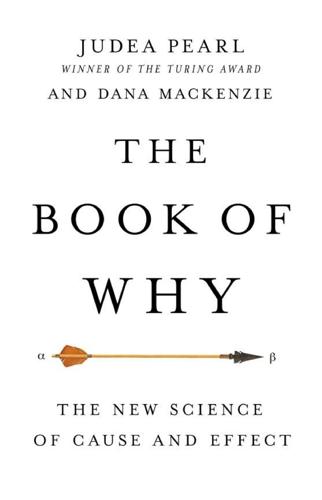
The Book of Why: The New Science of Cause and Effect
by
Judea Pearl
and
Dana Mackenzie
Published 1 Mar 2018
Long-term trends in cancer mortality in the United States, 1930–1998. Cancer 97: 3133–3275. CHAPTER 6. PARADOXES GALORE! Annotated Bibliography The Monty Hall paradox appears in many introductory books on probability theory (e.g., Grinstead and Snell, 1998, p. 136; Lindley, 2014, p. 201). The equivalent “three prisoners dilemma” was used to demonstrate the inadequacy of non-Bayesian approaches in Pearl (1988, pp. 58–62). Tierney (July 21, 1991) and Crockett (2015) tell the amazing story of vos Savant’s column on the Monty Hall paradox; Crockett gives several other entertaining and embarrassing comments that vos Savant received from so-called experts.
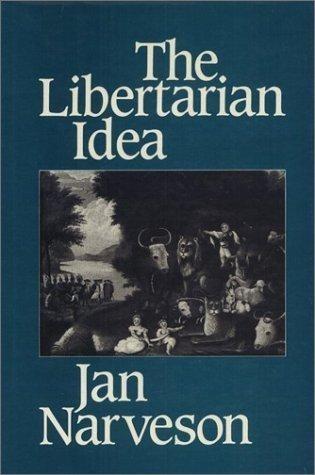
Libertarian Idea
by
Jan Narveson
Published 15 Dec 1988
The question before us, then, is whether there is any reason—any excuse, one might better say—for supposing that we shall do these things better by having a government than by going without one. Public Goods Arguments The modern theory of government has one major crutch among theorists. It is a special application of the problem of Prisoners Dilemma and is widely thought to yield an overwhelming argument for the State. Clearly, we must have a careful look. Public goods are one form of „externality‟. Suppose there is an exchange between A and B; each transfers something to the other in return for something he prefers to what he had before.

Corporate Warriors: The Rise of the Privatized Military Industry
by
Peter Warren Singer
Published 1 Jan 2003
A number of U.S. military observers feel that PMFs could field units as, or even more, effective than anv military in all of Africa, in- eluding the advanced South African forces.04 Some PMF executives argue that their firms onlv work for stales, and only reputable states at that.tx> Their rationale is that they would be driven away from such potential customer^ by a longer-term perspective, aiming for more future contracts with state clients. However, both the structure of the market and the record $v far argue against this. Much like the situation of a prisoner's dilemma game with a known ending point, in certain situations, high single-shot payoffs might trump. The current global market for PMFs is essentially unregulated, lacking both formal controls and limits. So, the firms make the choice of whom to work for. Some have chosen to assist dangerous groups in the past when it was in their interests, and, provided the money is good and barring any great changes in international regulation, will likely continue to do so in the future.66 Chapter 14 explores this point in further detail, but, suffice it to say, the worry with this present market sector is that such rogue firms, could fuse their power with that of arms traffickers, drug dealers, and terrorist groups, thereby creating an unholy alliance of non-state agents with the economic, military, and political power to overwhelm states and the state system in general.
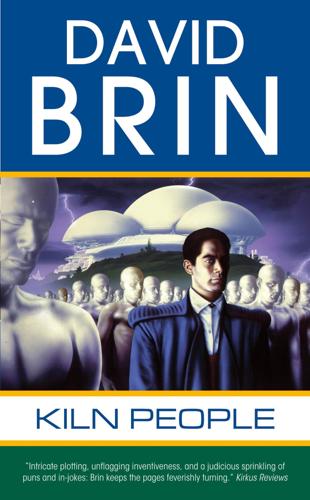
Kiln People
by
David Brin
Published 15 Jan 2002
Whistle-blower prizes grew bigger as one white-collar scam after another collapsed, feeding half of the resulting fines back into new rewards, enticing even more trusted lieutenants, minions, and right-hand men to blab away. To everyone's surprise, a world filled with cameras proved to offer pretty good safety against retribution by most mobs. Many gangs and cabals destroyed themselves simply by trying to enforce silence on defectors. The implacable logic of the Prisoner's Dilemma triggered collapse of one conspiracy after another as informers became public heroes, accelerating the rush for publicity and treasure. For a time it looked as if perfidy had its back to the proverbial wall. Any criminal scheme with more than three members appeared doomed from the start. Then dittotech arrived.

Collapse
by
Jared Diamond
Published 25 Apr 2011
In the next chapter we shall examine how that range of outcomes results from the imperative for businesses to make money to the extent that government regulations, laws, and public attitudes permit. One particular form of clashes of interest has become well known under the name "tragedy of the commons," in turn closely related to the conflicts termed "the prisoner's dilemma" and "the logic of collective action." Consider a situation in which many consumers are harvesting a communally owned resource, such as fishermen catching fish in an area of ocean, or herders grazing their sheep on a communal pasture. If everybody overharvests the resource, it will become depleted by overfishing or overgrazing and thus decline or even disappear, and all of the consumers will suffer.
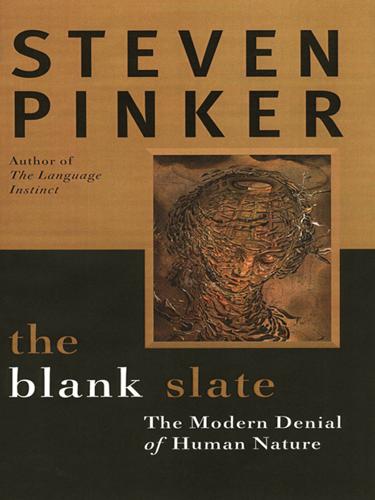
The Blank Slate: The Modern Denial of Human Nature
by
Steven Pinker
Published 1 Jan 2002
In that case the players had to recognize they were in a futile game and mutually decide to get out of it. Glover draws an important conclusion about how the cognitive component of human nature might allow us to reduce violence even when it appears to be a rational strategy at the time: Sometimes, apparently rational self-interested strategies turn out (as in the prisoners’ dilemma…) to be self-defeating. This may look like a defeat for rationality, but it is not. Rationality is saved by its own open-endedness. If a strategy of following accepted rules of rationality is sometimes self-defeating, this is not the end. We revise the rules to take account of this, so producing a higher-order rational strategy.
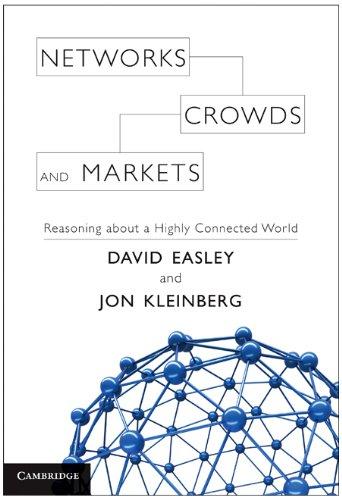
Networks, Crowds, and Markets: Reasoning About a Highly Connected World
by
David Easley
and
Jon Kleinberg
Published 15 Nov 2010
Social Forces, 84:1471–1495, 2006. [385] Jeffrey Travers and Stanley Milgram. An experimental study of the small world problem. Sociometry, 32(4):425–443, 1969. [386] Paul E. Turner and Lin Chao. Prisoner’s Dilemma in an RNA virus. Nature, 398:441–443, April 1999. [387] Paul E. Turner and Lin Chao. Escape from Prisoners Dilemma in RNA phage φ6. American Naturalist, 161(3):497–505, March 2003. [388] Brian Uzzi. The sources and consequences of embeddedness for economic performance of organizations: The network effect. American Sociological Review, 61(4):674–698, August 1996. [389] Thomas Valente. Evaluating Health Promotion Programs.

Artificial Intelligence: A Modern Approach
by
Stuart Russell
and
Peter Norvig
Published 14 Jul 2019
Formal Semantics: The Essential Readings. Wiley-Blackwell. Post, E. L. (1921). Introduction to a general theory of elementary propositions. American Journal of Mathematics, 43, 163–185. Poulton, C. and Watts, M. (2016). MIT and DARPA pack Lidar sensor onto single chip. IEEE Spectrum, August 4. Poundstone, W. (1993). Prisoner's Dilemma. Anchor. Pourret, O., Naim, P., and Marcot, B. (2008). Bayesian Networks: A Practical Guide to Applications. Wiley. Pradhan, M., Provan, G. M., Middleton, B., and Henrion, M. (1994). Knowledge engineering for large belief networks. In UAI-94. Prawitz, D. (1960). An improved proof procedure.